#yellow banded millipede
Text

Yellow Banded Millipede
#flickr#photography#bugs#insects#millipedes#anadenobolus monilicornis#yellow banded millipede#florida#united states
33 notes
·
View notes
Text
happy 4/20 here's some headcanons about the shit bugs used to get elevated
Alcohol: good 'ol alcohol. Found everywhere in every tribe of Hallownest, brewed in pretty much every way possible. Unregulated in trade by pretty much all tribes except for the stuff the Pale King consumes, which is often strong enough to give an entire room alcohol poisoning (wyrms are resistant to pretty much all toxins). Even the Hive have fermented honey and nectar, though they are much stricter about who indulges; it's more often exported for trade than consumed. Among the tribes, limitations only exist among the beetles and mantises, as both have violent tendencies and are liable to pick a fight when drunk; mantises regulate it to festivals and mating season, when sparring is likely to happen anyways, while drunk beetles outside homes and bars are often picked up and stuffed into trash cans to sober them up (and hopefully teach them a lesson in the meanwhile)
Gulka venom: an intoxicating substance with mildly hallucinogenic effects. Unregulated in trade, though that's mostly because there is no trade- the Mosskin refuse to collect it for other tribes, going out of their way only for the snail shamans (who are herb-masters with great healing knowledge) You'll have to harvest it yourself if you want to indulge, and that means there's a bit of a black market for it in Hallownest
Shamanistic Death-Herbs: a blend of relatively common herbs that, when dried together in a certain way, creates an extremely toxic blend if consumed or inhaled (when burned). Typically used to give those suffering a peaceful, painless death, it has powerful hallucinogenic effect under its killing threshold, and is one of the few toxins that can affect void creatures in any way (it puts them to sleep/makes them high). The fear of the void worshipers using them in battle against her moths was one of the excuses the Radiance used for her genocide against the snail tribe, though the shamans themselves have strict oaths to use them only for healing, and have never broken those oaths or used them against another tribe (at least, as far as the few who remember the age of dark can recall)
Bitterroot: an anti-contraceptive and abortion drug that can have an intoxicating-but dangerous- effect if too much of it is chewed. Grows primarily in the Crossroad region, and is heavily regulated in Hallownest- it is easily attainable and available to all, but herbalists are required by law to cut it and sell it in specific portion sizes for different species of bug, to prevent fatalistic overdosing. Tribes with overlap of the growing range tend to follow this rule, though it is not as strictly monitored as in the City (where many different species of bugs congregate, and thus require different doses to be effective)
Lifeblood: A life-boosting substance with magical roots that invigorates the self, at the risk of overestimating limitations and causing irreversible harm to the body when infused with it. This risk, while minimal with supervision, was what the Pale King used as an excuse to ban it, when in reality the main reason for the ban is because it is directly tied to an unascended abyssal god (the Lifeblood creature). Pretty heavily regulated in the Pale King's realm, but is used pretty regularly outside of his lands because nobody outside the most religious of the Beetle Tribe gives a shit
Brightpede poison: an extremely bitter, cyanide-based toxin that, like the death-herbs, can get one high if consumed in extremely small amounts. Secreted by pink and yellow-banded millipedes in the Deepnest region, used most commonly to kill political enemies or ease the passing of mortally wounded individuals. Harmlessly intoxicating to wyrms and their kin
Smokeweed: marijuana. It grows pretty much everywhere in Hallownest where greenery thrives, and is used both recreationally and medicinally, though the extent of it varies from culture to culture. Among the mantises, it's reserved only for strong warriors, to ease pain, battle-rage, and battle-lust. In the City of Tears, use is limited to smokehouses to prevent air contamination in close quarters, but is perfectly legal in private quarters, cheap to buy, and is typically recreational or therapeutic (there is, however, more variation in strains and expensive variants available to those of higher social rank, with the blooms grown in the White Lady's gardens going for the highest). In Deepnest, it's technically limited from the working castes to prevent injury, but is allowed during times of leisure and is unlimited to the injured or sick (if trade allows it). The Mosskin, Snails, and the Moths typically used it for religious reasons. Only the Hive have strict regulations against it (as they do with everything else).
Shrooms: Several species of mushrooms in Deepnest and the Fungal Wastes offer a variety of intoxicating and hallucinogenic effects, with a variety of different toxicity/fatality levels. Really only the Mantids know how to correctly harvest and identify each species responsible for each effect, a secret they hold closely guarded within their own tribe, but that doesn't stop certain individuals from different tribes to come in and sample the shrooms (and, if overdosed, become a fun little treat for the mantises)
The sap and nectar of the White Lady: really only attainable if you go praying to her for reproductive help, as it is an intense healing agent and potent aphrodisiac. Momentarily cures infertility, and brings about a high, but also induces heat. Tea can be made from her bark with similar (but less potent) effects, but again it must be provided from her willingly, and such examples are rare. Technically intoxicating, but only given to those struggling with infertility, miscarriages, suffering from injuries related to childbearing or birth, etc
#hollow knight#hollow knight headcanons#yeah i had to make some of them up but also like. kinda at a limit for bug drugs in canon#most of these dont work on gods rip pk and escaping his depression
218 notes
·
View notes
Text
Intro thingy bcuz I actually kinda want to turn this blog into something
don’t mind the way this stuff is super specific that’s just how I am haigeugdhi, I might clean this up in the future
so it doesn’t take up so much room vv
About this blog!
I am planning on doing: Art and comics if I have any ideas
My art will be mostly FNAF based, probably mostly William Afton
Tags:
#springshit - anything that doesn’t follow the other tags LMAO
#springartz - art
#springycomicz - comics!
#fav posts tag - posts I rb and want to find easily
#william dies in springbonnie before any of all of the shit au - fnaf AU, creative name I know
Projects:
William dies in springbonnie before any of all of the shit au - here’s the post for it! Doing a comic for it too- comic teaser :)
Boundaries
Do not interact: proshippers, homophobes, transphobes, ableists, zoos, pedos, basically anyone who’s an asshole.
Do not: flirt with me non-jokingly, insult me non-jokingly, sexualize me or my art that’s not meant to be sexual
You can: flirt with me jokingly, insult me jokingly, call me out if I do anything shitty
Warnings: I will make sexual jokes (not about real people), I will cuss, I will use slurs I can reclaim, I have a dark sense of humor (ACTUAL dark humor, not racism/homophobia/transphobia/sexism disguised as humor), I might draw gory things or art about sensitive subjects such as abuse, murder, neglect, etc (I will put warnings + tags)
My other blogs:
@askafton85 - William Afton ask blog
About me!
My name: William
Other names I’m okay with: Afton, Springtrap, Dave, Vincent, Miller
Nicknames you can call me: Will, Bill, Billy, Liam, (I’m okay with Willy but it jus reminds me of penises ngl LMAO), Spring
My pronouns!
he/him. You can use he/him exclusively! I am okay with that
Other pronouns
With these, I don’t mind if you don’t use them, I just like them because they help me explain my gender identity more
it/itself, rot/rots/rotself, glitch/glitchself, clown/clownself, wire/wireself, circuit/circuitself, bunny/bunnyself, moss/mossself, bug/bugself, spring/springself
My personality:
I usually try to be fun and silly, but I can be easy to anger especially with annoying things like noises (I have sensory issues)
I am usually pretty hyper and I try my best to be kind
I am not the most empathetic or sympathetic person, I will usually not care about people’s personal problems, but if you are very close to me I’ll try my best to help you through it
When I’m tired I can be extremely unenthusiastic and inactive
Other things:
Kins:
William Afton (biggest), Klaus Baudelaire, Dipper Pines, Stanford Pines
I am a trans man, I identify as a boy
I’m autistic. I will sometimes use tone tags (ex. /j, /s, /lh), and sometimes I will be slow at understanding things, so please be patient
I keyboard spam a lot
Favorites
Color(s): Purple, green, and yellow
Food: ORANGE CHICKEN <333
Animal(s): Bunnies, great eared nightjars, sharks, millipedes, cats
Movie(s): FNAF movie, The Aristocats, TMNT: Mutant Mayhem, Spiderverse movies
Show(s): Gravity Falls, Steven Universe, TAWOG, TNMT 2005 and 2018, Series of Unfortunate Events
Book(s): Harry Potter series, DOAWK, All FNAF books
Game(s): All FNAF games, Minecraft, Roblox, Rocket League, Papa’s games on Coolmathgames lmao
Fictional character(s): William Afton (including Springbonnie, Springtrap, Glitchtrap, etc), Henry Emily, all the Bonnies, Klaus Baudelaire, Dipper Pines, Stanford Pines
My interests
Special interest(s): FNAF!!!! (I LOVE FNAF HSIHEHIDIH)
Others: Cosplay, art, skateboarding, music, and bugs
I dress alternately, and if I had to categorize my main style, it’d be goblincore (which is like grungey fairycore)
My music taste is ALL over the place. Genres I like: Musical, rock, indie, jazz, swing, hyperpop, midwestern emo, and more
Bands/artists I like:
Insane Clown Posse, Will Wood + Will Wood and the Tapeworms, Lemon Demon, Micheal Bublé, Jack Stauber, Rebzyyx, Tally Hall, MCR, P!ATD, McCafferty, The Living Tombstone, AC/DC, Weezer, The Front Bottoms, Rio Romeo, Queen, Weird Al, MSI, TV Girl, Frank Sinatra, Tom Lehrer
Yes, I know that not everyone on that list are very good people, but I do not support them, I just like their songs
Some of my favorite songs atm:
Copacabana - Barry Manilow. The Main Character - Will Wood Thermodynamic Lawyer - Will Wood and the Tapeworms. Stuck Inside - Black Gryph0n + The Living Tombstone. TERRIBLE THINGS - AXIE. Jaws - Lemon Demon. My Trains - Lemon Demon. Vow Of Silence - Lemon Demon. The Satirist’s Love Song - Lemon Demon. Malmo - Mook. Halls Of Illusions - ICP. To Catch A Predator- ICP. Trees - McCafferty. Dance With Me - Topline Addicts. Taking What’s Not Yours - TV Girl. Lover’s Rock - TV Girl. Valerie - TV Girl. Somethin’ Stupid - Frank Sinatra. The Masochism Tango - Tom Lehrer
Here’s my Spotify account that has some playlists of mine: yay
8 notes
·
View notes
Text
Warning!!! For abuse, attempted murder, drowning, blood, wounds, and scars.

- Goes by the pronouns they/them
- They are a loner but were once a jewelry maker of Gardenclan. Gardenclan is filled with cats who have bug like traits, such as wings or antenna.
- They have a snail shell and little antenna. They are also a munchkin cat!
- They often make wedding bands for new mates or cats wanting to propose. They still work for Gardenclan as well as Vernalclan and Tidalclan
- They got their prefix from their snail like traits.
- They got their suffix from their markings.
- Their father, named Centipedeclaw, is the deputy of the clan and their mother, named Ladybugswirl, is a loner. They aren't together anymore and did not leave each other on good terms. In fact, Centipede had Ladybug exiled after she wanted to break things off. Snail lives with their mother.

- They were born with two sisters who died young. Their names were Junekit and Milipedekit.
- Centipedeclaw tried to kill them by knocking them into the ocean. Luckily, a she-cat was there to save them. Snail went back to the clans camp and told the clan what their father did. The leader of the clan, a cat named Atlasnectar, exiled Centipedeclaw. Ladybugswirl was allowed back in the clan but chose to stay as a loner and this when Snail decided to leave.
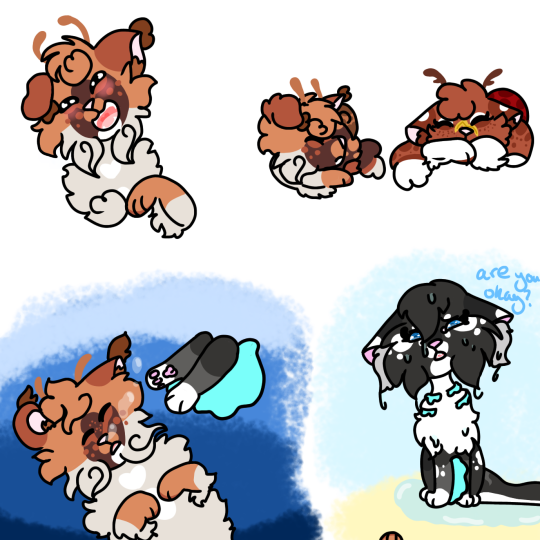
- They have a girlfriend who lives in Tidalclan. Her name is Orcasplash. She is the cat who saved them.
- They absolutely love to make jewelry for others and will make you a charm bracelet after knowing you enough to know the right charms for you.
- They are particularly deaf and have been from birth. They can read lips, which they use for understanding cats around them.
- They speak in signs which is kinda weird to the clans because they don't really know what they are saying but their friends and family think it's adorable. They mostly uses signs to express themselves but they can speak when they get overly emotional. It hurts them a lot to do so though.
- They normal wear rose petals in their fur. They will have yellow rose petals in their fur most times because they are their favorite.
- Their charms on their bracelet mean a few things to them. A moth for the symbol of their clan. An orca for Orcasplash. A mushroom for their favorite food. A snail because they really like bugs and snails are cute.
Ahhhhh!!! They are done! I loved drawing them again. I missed them. Dearly. My sweet little snail. Their family is a mess but I liked writing the lore for them. I really hope you all like them as much as I do! I hope you have a great day! I'll get into the bugs now soooooo.
Snailmottle is obviously a snail. I made them a common garden snail.
Ladybugswirl is a Ladybug. Not too complicated.
Centipedeclaw is a centipede. I had to do research for the antenna, and I gagged. Centipedes and millipedes are the only bugs I don't like.
Junekit is based off of a ten lined June bug.
Milipedekit is a milipede. She looks a lot like her father.
Atlasnectar is an Atlas moth. Nectar is the leader suffix.
Orcasplash is based on an ocra, my favorite animal!
7 notes
·
View notes
Text
okokok i wanna make a list of interesting animals that i like and some of which i have trouble remembering sometimes. i will edit this over time. ok. i thought we would be able to do readmores on mobile by now but apparently not. ok (i also always forget the word reconcile so that can be here too)
...
MARSUPIALS common brushtail possum, quoll, tasmanian devil, thylacine, cuscus (common spotted cuscus, sulawesi bear cuscus, silky cuscus), opossum (white-eared opossum, four-eyed opossum, yapok/water opossum), tree kangaroo, glider (greater glider, yellow-bellied glider)
RODENTS rat, mouse, nutria, Gambian pouched rat, capybara, Brazilian porcupine, jerboa (long-eared jerboa), chinchilla, vizcacha
MUSTELIDS ferret, weasel, stoat, marten (yellow-throated marten), skunk (spotted skunk), mink, greater hog badger
PRIMATES tarsier, aye aye, ring tailed lemur, japanese macaque, gelada, marmoset (pygmy marmoset), capuchin, spider monkey (red-faced spider monkey), howler monkey, white-faced saki
VIVERRIDS binturong, civet (owston's palm civet, African civet, banded palm civet), linsang, genet
PROCYONIDS kinkajou, coati, ringtail/cacomistle, raccoon
HOGS wild boar (really been enjoying these lately) , red river hog, pygmy hog

FELINES margay, rusty-spotted cat, black-footed cat, asiatic golden cat, bornean bay cat, little spotted cat/oncilla, jaguarundi, sandcat, lynx, bobcat, caracal, serval, fishing cat, pallas' cat
ANTEATERS tamandua, giant anteater, silky anteater, pangolin
LAPINES rabbit (flemish giant rabbit, sumatran striped rabbit, Netherland dwarf broken chocolate colour (someone said i would be this if i was a bunny)), hare
OTHER MAMMALS fossa, mongoose (yellow mongoose, common slender mongoose), elephant shrew (black and rufous elephant shrew), treeshrew, colugo, spotted hyena, antelope (oryx, roan antelope), honduran white bat
FISH eel (New Zealand longfin eel, moray eel, gulper eel), black ghost knife fish
ARACHNIDS jumping spider, house spider, daddy long legs, huntsman spider, tarantula, camel spider, tailless whip scorpion, horseshoe crab
OTHER INVERTEBRATES snail (giant African snail), slug, slater/pill bug, isopod, praying mantis, bee (honeybee, bumble bee), moth, millipede, centipede, earwig, beetle, sand hopper
...
ok now im tired and im going to go to bed. i will readmore this tomorrow when im on the computer maybe. goodnight
5 notes
·
View notes
Text
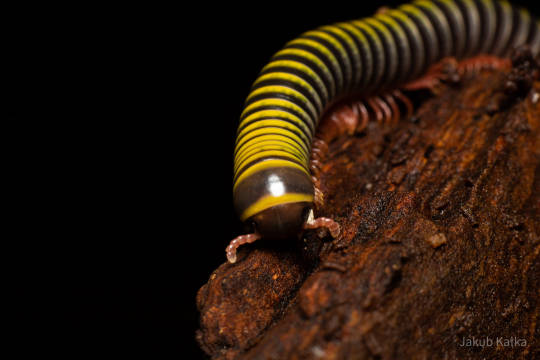

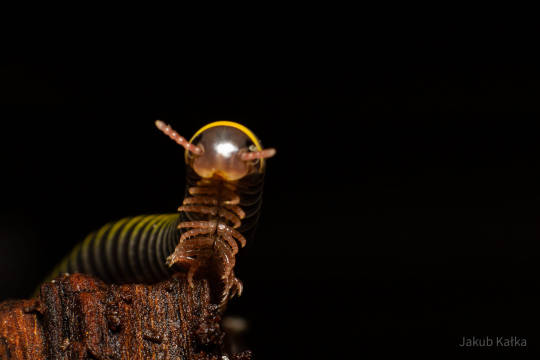
Bumblebee millipede - Anadenobolus monilicornis
Individuals are dark brown with distinctive yellow bands, and measure 2.5–3 centimetres (1.0–1.2 in) long. The legs and antennae are red.
This species inhabits leaf litter. Birds and captive monkeys have been observed crushing these millipedes and rubbing their secretions on their wings or fur, potentially to repel insects. The secretions of millipedes may have some properties that repel insects.
This species is native to the Caribbean: it is found in Brazil, Venezuela, Suriname, Guyana, and on Barbados, Trinidad and Tobago, St. Maarten, Martinique, Dominica, Guadeloupe, Jamaica, Puerto Rico and Haiti.
It species has been introduced to southern Florida, where it can occur in large numbers but is not considered a pest.
4 notes
·
View notes
Text
my millipede and her legsss
#millipede#millipedes#bumblebee millipede#yellow banded millipede#anthropod#bugs#asmr#legs#wild nature#animals#the wave#mine
11 notes
·
View notes
Text

the tiniest roar.
#bugs#(general catch all tag)#a lil pal came in with the houseplants!#pretty sure it's a Yellow Banded. the plants come up from Florida.#and yes yes don't touch millipedes. do as I say not as I do ok thanks
7 notes
·
View notes
Photo
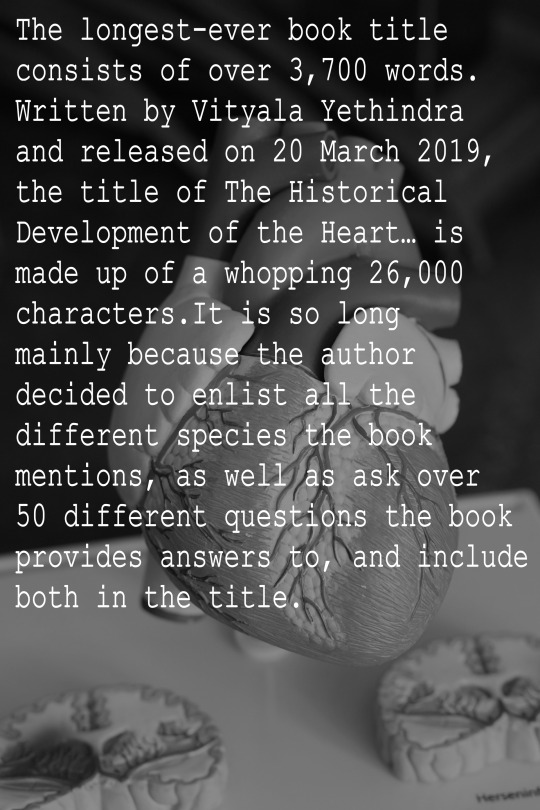
The full book title contains 3777 words and reads as follows: 'The historical development of the Heart i.e. from its formation from Annelida: Clam worm, Seamouse, Lugworm, Megascolex, Tubifex, Pheretima, Freshwater leech, marine leech, land leech. Arthropoda: Ladybird, Krill, Rock Barnacle, Root-headed Barnacle, Copepod, Silverfish, Cairns birdwing, Silver - spotted skipper, Scutigera, Cray fish, Large white, Andonis blue, Camberwell beauty, Tiger swallowtail, Regent skipper, Black – veined white, Green – underside blue, Blue Morpho, Apollo, Guava skipper, Cleopatra, Large copper, Millipede, Orb spider, Black widow spider, Giant crab spider, Wolf spider, Bird – eating spider, Tenebrionid beetle, Green Tiger beetle, African goliath beetle, Scolopendra, Diving beetle, African ground beetle, New guinea weevil, Barnacle, Lobster, Shrimp, Woodlice, Mite, Prawn, Housefly, Butterfly, Monarch butterfly, Peacock butterfly, Honey bee, Fairy shrimp, Horsehoe crab, Tick, Bluebootle, Froghopper, Yellow crazy ant, Water flea, Sea spider, Fiddler crab, Shiny spider crab, Hermit crab, Sail swallowtail, Red admiral, Morpho butterfly, Desert locust, Stephens island weta, Speckled bush cricket, Mole cricket, Dung – beetle, Euthalia ynipardus, Small blues, Termite, Hornet, Mosquito, Garden spider, Tarantula, Desert hairy scorpion, Emperor dragon – fly, Moth, Centipede, Wood ant, Stag beetle, Indian red admiral, Blue admiral, Harvestman, Hoverfly, Shield bug, Assassin bug, Cicada, Coreid bug, Rose aphid, Water – boatman, Wasp, June bug, Large tortoiseshell, Frog beetle, Mexican red – legged tarantula, Paintedlady, Sydney funnelweb spider, Small tortoiseshell, Mountain bumble bee, Trapdoor spider, Jumping spider, Daddy longlegs spider, Orchind bee, Asian carpenter bee, Parasitic bee, House spider, Giant longhorn beetle, Flea, Bedbug Beetle, Cockroach, Scorpion, Spider, Ant, Gnats, Grasshopper, Silver fish, Crab, Great green bush cricket, Elephant hawk – moth. Mollusca: Neomenia, Chaetoderma, Chiton, Lepidopleurus, Apple snail, Sea hare, Sea lemon, Dentalium, Freshwater mussel, Marine mussel, Pearl oyster, Cuttlefish, Giant squid, Chambered fish, Devilfish. Fishes or Pisces: African glass catfish, African lungfish, Aholehole, Airbreathing catfish, Alaska blackfish, Albacore, Alewife, Alfonsino, Algae eater, Alligatorfish, Alligator gar, Amberjack - Seriola dumerili, American sole, Amur pike, Anchovy, Anemonefish, Angelfish, Angler, Angler catfish, Anglerfish, Antarctic cod, Antarctic icefish, Antenna codlet, Arapaima, Archerfish, Arctic char, Armored gurnard, Armored searobin, Armorhead, Armorhead catfish, Armoured catfish, Arowana, Arrowtooth eel, Asian carps, Asiatic glassfish, Atka mackerel, Atlantic Bonito (Sarda sarda), Atlantic cod, Atlantic herring, Atlantic salmon, Atlantic Sharpnose Shark - Rhizoprioltodon terraenovae, Atlantic saury, Atlantic silverside, Australasian salmon, Australian grayling, Australian herring, Australian lungfish, Australian prowfish, Ayu, Baikal oilfish, Bala shark, Ballan wrasse, Bamboo shark, Banded killifish, Bandfish, Banjo, Bangus, Banjo catfish, Bank Sea Bass, Barb, Barbel, Barbeled dragonfish, Barbeled houndshark, Barbel-less catfish, Barfish, Barracuda, Barracudina, Barramundi, Barred danio, Barreleye, Basking shark, Bass, Basslet, Batfish, Bat ray, Beachsalmon, Beaked salmon, Beaked sandfish, Beardfish, Beluga sturgeon, Bengal danio, Betta, Bichir, Bicolor goat fish, Bigeye, , Bighead carp, Bigmouth buffalo, Bigscale, Billfish, Bitterling, Black angelfish, Black bass, Black dragonfish, Blackchin, Blackfin Tuna - Thunnus atlanticus, Blackfish, Black neon tetra, Blacktip reef shark, Black mackerel, Black scalyfin, Black sea bass, Black scabbardfish, Black swallower, Black tetra, Black triggerfish, Bank Sea Bass aka Yellow Sea Bass - Centropristis ocyurus, Bleak, Blenny, Blind goby, Blind shark, Blobfish, Blueline Tilefish, Blowfish, Blue catfish, Blue danio, Blue-redstripe danio, Blueline Tilefish , Blue eye, Bluefin tuna, Bluefish, Bluegill, Blue gourami, Blue shark, Blue triggerfish, Blue whiting, Bluntnose knifefish, Bluntnose minnow, Boafish, Boarfish, Bobtail snipe eel, Bocaccio, Boga, Bombay duck, Bonefish, Bonito, Bonnetmouth, Bonytail chub, Bronze corydoras, Bonytongue, Bowfin, Boxfish, Bramble shark, Bream, Brill, Bristlemouth, Bristlenose catfish, Broadband dogfish, Brook lamprey, Brook trout, Brotula, Brown trout, Buffalo fish, Bullhead, Bullhead shark, Bull shark, Bull trout, Burbot, Bumblebee goby, Buri, Burma danio, Burrowing goby, Butterfish, Butterfly ray, Butterflyfish, California flyingfish, California halibut, Canary rockfish, Candiru, Candlefish, Capelin, Cardinalfish, Cardinal tetra, Carp, Carpetshark, Carpsucker, Catalufa, Catfish, Catla, Cat shark, Cavefish, Celebes rainbowfish, Central mudminnow, Chain pickerel, Channel bass, Channel catfish, Char, Cherry salmon, Chimaera, Chinook salmon, Cherubfish, Chub, Chubsucker, Chum salmon, Cichlid, Cisco, Climbing catfish, Climbing gourami, Climbing perch, Clingfish, Clownfish, Clown loach, Clown triggerfish, Cobbler, Cobia, Cod, Codlet, Codling, Coelacanth, Coffinfish, Coho salmon, Coley, Collared carpetshark, Collared dogfish, Colorado squawfish, Combfish, Combtail gourami, Common carp, Common tunny, Conger eel, Convict blenny, Convict cichlid, Cookie-cutter shark, Coolie loach, Cornetfish, Cowfish, Cownose ray, Cow shark, Crappie, Creek chub, Crestfish, Crevice kelpfish, Croaker, Crocodile icefish, Crocodile shark, Crucian carp, Cuckoo wrasse, Cusk, Cusk-eel, Cutlassfish, Cutthroat eel, Cutthroat trout, Dab, Dace, Desert pupfish, Devario, Devil ray, Dhufish, Discus, Diver: New Zealand sand diver or long-finned sand diver, Dogfish, Dogfish shark, Dogteeth tetra, Dojo loach, Dolly Varden trout, Dolphin fish - Corypaena hippurus, Dorab, Dorado, Dory, Dottyback, Dragonet, Dragonfish, Dragon goby, Driftfish, Driftwood catfish, Drum, Duckbill, Duckbill eel, Dusky grouper, Dusky Shark - Carcharhinus obscurus, Dwarf gourami, Dwarf loach, Eagle ray, Earthworm eel, Eel, Eel cod, Eel-goby, Eelpout, Eeltail catfish, Elasmobranch, Electric catfish, Electric eel, Electric knifefish, Electric ray, Elephant fish, Elephantnose fish, Elver, Ember parrotfish, Emerald catfish, Emperor angelfish, Emperor bream, Escolar, Eucla cod, Eulachon, European chub, European eel, European flounder, European minnow, European perch, False brotula, False cat shark, False moray, Fangtooth, Fathead sculpin, Featherback, Fierasfer, Fire goby, Filefish, Finback cat shark, Fingerfish, Firefish, Flabby whale fish, Flagblenny, Flagfin, Flagfish, Flagtail, Flashlight fish, Flatfish, Flathead, Flathead catfish, Flier, Flounder, Flying gurnard, Flying fish, Footballfish, Forehead brooder, Four-eyed fish, French angelfish, Freshwater eel, Freshwater hatchetfish, Freshwater shark, Frigate mackerel, Frilled shark, Frogfish, Frogmouth catfish, Fusilier fish, Galjoen fis, Ganges shark, Geel, Garibaldi, Garpike, Ghost fish, Ghost flathead, Ghost knifefish, Ghost pipefish, Ghost shark, Ghoul, Giant danio, Giant gourami, Giant sea bass, Gibberfish, Gila trout, Gizzard shad, Glass catfish, Glassfish, Glass knifefish, Glowlight danio, Goatfish, Goblin shark, Goby, Golden dojo, Golden loach, Golden shiner, Golden trout, Goldeye, Goldfish, Gombessa, Goosefish, Gopher rockfish, Gourami, Grass carp, Graveldiver, Grayling, Gray mullet, Gray reef shark, Great white shark, Green swordtail, Greeneye, Greenling, Grenadier, Green spotted puffer, Ground shark, Grouper, Grunion, Grunt, Grunter, Grunt sculpin, Gudgeon, Guitarfish, Gulf menhaden, Gulper eel, Gulper, Gunnel, Guppy, Gurnard, Haddock, Hagfish, Hairtail, Hake, Halfbeak, Halfmoon, Halibut, Halosaur, Hamlet, Hammerhead shark, Hammerjaw, Handfish, Hardhead catfish, Harelip sucker, Hatchetfish, Hawkfish, Herring, Herring smelt, Hickory Shad, Horn shark, Horsefish, Houndshark, Huchen, Humuhumunukunukuapua'a, Hussar, Icefish, Ide, Ilisha, Inanga, Inconnu, Jack, Jackfish, Jack Dempsey, Japanese eel, Javelin, Jawfish, Jellynose fish, Jewelfish, Jewel tetra, Jewfish, John Dory, Kafue pike, Kahawai, Kaluga, Kanyu, Kelp perch, Kelpfish, Killifish, King of the herrings, Kingfish, King-of-the-salmon, Kissing gourami, Knifefish, Knifejaw, Koi, Kokanee, Kokopu, Kuhli loach, Labyrinth fish, Ladyfish, Lake chub, Lake trout, Lake whitefish, Lampfish, Lamprey, Lanternfish, Largemouth bass, Leaffish, Lefteye flounder, Lemon shark, Lemon sole, Lemon tetra, Lenok, Leopard danio, Lightfish, Limia, Lined sole, Ling, Ling cod, Lionfish, Livebearer, Lizardfish, Loach, Loach catfish, Loach goby, Loach minnow, Longfin, Longfin dragonfish, Longfin escolar, Longfin smelt, Long-finned char, Long-finned pike, Longjaw mudsucker, Longneck eel, Longnose chimaera, Longnose dace, Longnose lancetfish, Longnose sucker, Longnose whiptail catfish, Long-whiskered catfish, Loosejaw, Lost River sucker, Louvar, Loweye catfish, Luderick, Luminous hake, Lumpsucker, Lungfish, Mackerel, Mackerel shark, Madtom, Mahi-mahi, Mahseer, Mail-cheeked fish, Mako shark, Mandarinfish, Masu salmon, Medaka, Medusafish, Megamouth shark, Menhaden, Merluccid hake, Mexican golden trout, Midshipman fish, Milkfish,, Minnow, Minnow of the deep, Modoc sucker, Mojarra, Mola, Monkeyface prickleback, Monkfish, Mooneye, Moonfish, Moorish idol, Mora, Moray eel, Morid cod, Morwong, Moses sole, Mosquitofish, Mouthbrooder, Mozambique tilapia, Mrigal, Mud catfish (Mud cat), Mudfish, Mudminnow, Mud minnow, Mudskipper, Mudsucker, Mullet, Mummichog, Murray cod, Muskellunge, Mustache triggerfish, Mustard eel, Naked-back knifefish, Nase, Needlefish, Neon tetra, New World rivuline, New Zealand smelt, Nibble fish, Noodlefish, North American darter, North American freshwater catfish, North Pacific daggertooth, Northern anchovy, Northern clingfish, Northern lampfish, Northern pike, Northern sea robin, Northern squawfish, Northern stargazer, Notothen, Nurseryfish, Nurse shark, Oarfish, Ocean perch, Ocean sunfish, Oceanic whitetip shark, Oilfish, Oldwife, Old World knifefish, Olive flounder, Opah, Opaleye, Orange roughy, Orangespine unicorn fish, Orangestriped triggerfish, Orbicular batfish, Orbicular velvetfish, Oregon chub, Orfe, Oriental loach, Oscar, Owens pupfish, Pacific albacore, Pacific cod, Pacific hake, Pacific herring, Pacific lamprey, Pacific salmo, Pacific saury, Pacific trout, Pacific viperfish, Paddlefish, Pancake batfish, Panga, Paradise fish, Parasitic catfish, Parore, Parrotfish, Peacock flounder, Peamouth, Pearleye, Pearlfish, Pearl danio, Pearl perch, Pelagic cod, Pelican eel, Pelican gulper, Pencil catfish, Pencilfish, Pencilsmelt, Peppered corydoras, Perch, Peters' elephantnose fish, Pickerel, Pigfish, Pike conger, Pike eel, Pike, Pikeblenny, Pikeperch, Pilchard, Pilot fish, Pineapplefish, Pineconefish, Pink salmon, Píntano, Pipefish, Piranha, Pirarucu, Pirate perch, Plaice, Platy, Platyfish, Pleco, Plownose chimaera, Poacher, Pollock, Pomfret, Pompano dolphinfish, Ponyfish, Popeye catalufa, Porbeagle shark, Porcupinefish, Porgy, Port Jackson shark, Powen, Prickleback, Pricklefish, Prickly shark, Prowfish, Pufferfish, Pumpkinseed, Pupfish, Pygmy sunfish, Queen danio, Queen parrotfish, Queen triggerfish, Quillback, Quillfish, Rabbitfish, Raccoon butterfly fish, Ragfish, Rainbow trout, Rainbowfish, Rasbora, Ratfish, Rattail, Ray, Razorback sucker, Razorfish, Red Grouper, Red salmon, Red snapper, Redfin perch, Redfish, Redhorse sucker, Redlip blenny, Redmouth whalefish, Redtooth triggerfish, Red velvetfish, Red whalefish, Reedfish, Reef triggerfish, Remora, Requiem shark, Ribbon eel, Ribbon sawtail fish, Ribbonfish, Rice eel, Ricefish, Ridgehead, Riffle dace, Righteye flounder, Rio Grande perch, River loach, River shark, River stingray, Rivuline, Roach, Roanoke bass, Rock bass, Rock beauty, Rock cod, Rocket danio, Rockfish, Rockling, Rockweed gunnel, Rohu, Ronquil, Roosterfish, Ropefish, Rough scad, Rough sculpin, Roughy, Roundhead, Round herring, Round stingray, Round whitefish, Rudd, Rudderfish, Ruffe, Russian sturgeon, Sábalo, Sabertooth, Saber-toothed blenny, Sabertooth fish, Sablefish, Sacramento blackfish, Sacramento splittail, Sailfin silverside, Sailfish, Salamanderfish, Salmon, Salmon shark, Sandbar shark, Sandburrower, Sand dab, Sand diver, Sand eel, Sandfish, Sand goby, Sand knifefish, Sand lance, Sandperch, Sandroller, Sand stargazer, Sand tiger, Sand tilefish, Sandbar Shark - Carchathinus plumbeus, Sarcastic fringehead, Sardine, Sargassum fish, Sauger, Saury, Sawfishm, Saw shark, Sawtooth eel, Scabbard fish, Scaly dragonfish, Scat, Scissortail rasbora, Scorpionfish, Sculpin, Scup, Sea bass, Sea bream, Sea catfish, Sea chub, Sea devil, Sea dragon, Sea lamprey, Sea raven, Sea snail, Sea toad, Seahorse, Seamoth, Searobin, Sevan trout, Sergeant major, Shad, Shark, Sharksucker, Sharpnose puffer, Sheatfish, Sheepshead, Sheepshead minnow, Shiner, Shortnose chimaera, Shortnose sucker, Shovelnose sturgeon, Shrimpfish, Siamese fighting fish, Sillago, Silver carp, Silver dollar, Silver dory, Silver hake, Silverside, Silvertip tetra, Sind danio, Sixgill ray, Sixgill shark, Skate, Skilfish, Skipjack tuna, Slender mola, Slender snipe eel, Sleeper, Sleeper shark, Slickhead, Slimehead, Slimy mackerel, Slimy sculpin, Slipmouth, Smalleye squaretail, Smalltooth sawfish, Smelt, Smelt-whiting, Smooth dogfish, Snailfish, Snake eel, Snakehead, Snake mackerel, Snapper, Snipe eel, Snipefish, Snoek, Snook, Snubnose eel, Snubnose parasitic eel, Sockeye salmon, Soldierfish, Sole, South American darter, South American lungfish, Southern Dolly Varden, Southern flounder, Southern hake, Southern sandfish, Southern smelt, Spadefish, Spaghetti eel, Spanish mackerel, Spearfish, Speckled trout, Spiderfish, Spikefish, Spinefoot, Spiny basslet, Spiny dogfish, Spiny dwarf catfish, Spiny eel, Spinyfin, Splitfin, Spookfish, Spotted climbing perch, Spotted danio, Spottail Pinfish - Diplodus holbrooki, Sprat, Springfish, Squarehead catfish, Squaretail, Squawfish, Squeaker, Squirrelfish, Staghorn sculpin, Stargazer, Starry flounder, Steelhead, Stickleback, Stingfish, Stingray, Stonecat, Stonefish, Stoneroller minnow, Stream catfish, Striped bass, Striped burrfish, Sturgeon, Sucker, Suckermouth armored catfish, Summer flounder, Sundaland noodlefish,Sunfish, Surf sardine, Surfperch, Surgeonfish, Swallower, Swamp-eel, Swampfish, Sweeper, Swordfish, Swordtail, Tadpole cod, Tadpole fish, Tailor, Taimen, Tang, Tapetail, Tarpon, Tarwhine, Telescopefish, Temperate bass, Temperate perch, Tenpounder, Tenuis, Tetra, Thorny catfish, Thornfish, Threadfin, Threadfin bream, Thread-tail, Three spot gourami, Threespine stickleback, Three-toothed puffer, Thresher shark, Tidewater goby, Tiger barb, Tigerperch, Tiger shark, Tiger shovelnose catfish, Tilapia, Tilefish, Titan triggerfish, Toadfish, Tommy ruff, Tompot blenny, Tonguefish, Tope, Topminnow, Torpedo, Torrent catfish, Torrent fish, Trahira, Treefish, Trevally, Triggerfish, Triplefin blenny, Triplespine, Tripletail, Tripod fish, Trout, Trout cod, Trout-perch, Trumpeter, Trumpetfish, Trunkfish, Tubeblenny, Tube-eye, Tube-snout, Tubeshoulder, Tui chub, Tuna, Turbot, Two spotted goby, Uaru, Unicorn fish, Upside-down catfish, Vanjaram, Velvet belly lanternshark, Velvet catfish, Velvetfish, Vermillion Snapper - Rhomboplites aurorubens, Vimba, Viperfish, Wahoo, Walking catfish, Wallago, Walleye, Walleye Pollock, Walu, Warmouth, Warty angler, Waryfish, Waspfish, Weasel shark, Weatherfish, Weever, Weeverfish, Wels catfish, Whale catfish, Whalefish, Whale shark, Whiff, Whitebait, White croaker, Whitefish, White marlin, White shark, Whitetip reef shark, Whiting, Wobbegong, Wolf-eel, Wolffish, Wolf-herring, Worm eel, Wormfish, Wrasse, Wrymouth, X-ray fish, Yellowback fusilier, Yellowbanded perch, Yellow bass, Yellowedge grouper (Hyporthodus flavolimbatus), Yellow-edged moray, Yellow-eye mullet, Yellowhead jawfish, Yellowfin croaker, Yellowfin cutthroat trout, Yellowfin grouper, Yellowfin Tuna - Thunnus albacares, Yellowfin pike, Yellowfin surgeonfish, Yellowfin tuna, Yellowmargin triggerfish, Yellow moray, Yellow perch, Yellowtail, Yellowtail amberjack, Yellowtail barracuda, Yellowtail clownfish, Yellowtail horse mackerel, Yellowtail kingfish, Yellowtail snapper, Yellow tang, Yellow weaver, Yellowtail catfish, Zander, Zebra bullhead shark, Zebra danio, Zebrafish, Zebra lionfish, Zebra loach, Zebra oto, Zebra pleco, Zebra shark, Zebra tilapia, Zebra turkeyfish, Ziege, Zingel. Amphibians: Frogs and Toads, Painted frogs, Disc tongued frogs, Fire Belly toads, Litter frogs, European Spadefoot toads, Parsley frogs, Tongueless frogs, Clawed frogs, Mexican Burrowing Toad, American spadefoot toads, Screeching frogs, True toads, Glass Frogs, Poison dart frogs, Ghost frogs, Shovelnose frogs, Tree frogs, Sedge frogs, Southern frogs, Narrow-mouthed frogs, Australian ground frogs, True frogs, Moss frogs, Seychelles frog, Giant Salamanders, Asiatic Salamanders, Mole Salamanders, Pacific giant salamanders, Amphiumas, Lungless salamanders, Mudpuppies and Waterdogs, Torrent salamanders, True salamanders and Newts, Sirens, Common caecilians, Fish caecilians, Beaked caecilians. Reptiles: Turtles, common snapping turtles and alligator snapping turtle, pond turtles and box turtles, tortoises, Asian river turtles and allies, pignose turtles, softshell turtles, river turtles, mud turtles, sea turtles, leatherback turtles, tuataras, scaled reptiles, agamas, chameleons, casquehead lizard, iguanas, Madagascar iguanids, collared and leopard lizards, horned lizards, anoles, wood lizards, Neotropical ground lizards, geckos, legless lizards, blind lizards, spinytail Lizards, plated lizards, spectacled lizards, whiptails and tegus, Lacertids, skinks, night lizards, glass lizards, American legless lizards, knob-scaled lizards, gila monsters, earless Monitor lizards, monitor lizards, worm Lizards, shorthead Worm Lizards, two-legged Worm Lizards, snakes, wart snakes, false coral snakes, dwarf pipe snakes, African burrowing asps, stiletto snakes, boas, anacondas, Old World sand boas, Mauritius snakes, Colubrids, typical snakes, Asian pipe snakes, cobras, coral snakes, mambas, sea snakes, Mexican pythons, pythons, dwarf boas, pipe snakes, shield-tailed snakes, vipers, pitvipers, Fae's viper, night adders, pitvipers, rattlesnakes, true vipers, sunbeam snakes, blind snakes, primitive blind snakes, slender blind snakes, thread snakes, blind snakes, typical blind snakes, Crocodiles, alligators, garials. Aves: Ostrich, rheas, cassowaries and emu, kiwis, elephant birds, upland moas, great moas, lesser moas, Tinamous, Australian brush turkey,megapodes, chachalacas, curassows, and guans, Guineafowl, pheasants and allies, New World quail, pheasants and relatives, mihirungs, screamers, magpie-goose, ducks, geese, and swans, grebes, swimming flamingos, flamingos, pigeons and doves, sandgrouse, mesites, Tawny frogmouth, Nightjars, oilbird, potoos, frogmouths, owlet-nightjars, treeswifts, swifts, hummingbird, cuckoos and relatives, turacos and relatives, bustards, hoatzin, cranes and allies, cranes, limpkin, trumpeters, rails and allies, adzebills, finfoots, flufftails, rails and relatives, thick-knees and allies, thick-knees and relatives, sheathbills, Magellanic plover, plover-like waders, golden plovers, ibisbill, oystercatchers, plovers and lapwings, jacana-like waders, painted snipes, Egyptian plover, jacanas, seedsnipes, plains-wanderer, sandpipers and relatives, buttonquail, gulls and allies, coursers and pratincoles, crab-plover, skuas and jaegers, auks and puffins, gulls, skimmers and terns, sunbittern, tropicbirds, penguins, albatrosses, austral storm petrels, northern storm petrels, petrels and relatives, White stork, storks, frigatebirds, boobies and gannets, darters, cormorants and shags, ibises and spoonbills, hamerkop, shoebill, pelicans, herons and relatives, New World vultures, secretarybird, osprey, hawks, eagles, buzzards, harriers, kites and Old World vultures, barn owls, true owls, mousebirds, cuckooroller, trogons and quetzals, hornbills, hoopoe, woodhoopoes, bee-eater, rollers, ground rollers, todies, motmots, Kingfisher, jacamars, puffbirds, African barbets, Asian barbets, toucans, toucan barbets, American barbets, woodpeckers, honeyguides, seriemas, falcons and relatives, kakapo, kea and kakas, cockatoos, African and American parrots, Australasian parrots, Pesquet's parrot, vasa parrots, Pitta cyanea, Lyrebird, New Zealand wrens, suboscines, Old World suboscines, sapayoa, Calyptomenid broadbills, pittas, broadbills, asities, New World suboscines, bronchophones, manakins, cotingas, sharpbills, royal flycatchers and allies, becards and tityras, spadebills, many-colored rush tyrants, mionectine flycatchers, tyrant flycatchers, tracheophones, crescent-chests, gnateaters, antbirds, antpittas, ground antbirds, ovenbirds, oscines, scrub-birds, lyrebirds, bowerbirds, Australasian treecreepers, Australasian wrens, bristlebirds, gerygones and allies, honeyeaters and relatives, Australasian babblers, logrunners, quail-thrushes and jewel-babblers, cuckoo-shrikes, whitehead and allies, sittellas, wattled ploughbills, whipbirds and quail-thrushes, Australo-Papuan bellbirds, crested shriketits, painted berrypeckers, vireos and relatives, whistlers and relatives, Old World orioles, Boatbills, woodswallows and butcherbirds, mottled berryhunter, ioras, bristlehead, bushshrikes and relatives, wattle-eyes and batises, vangas , fantails, silktail, drongo fantail, drongos, blue-capped ifrits, Australian mudnesters, birds-of-paradise, monarch flycatchers, shrikes, jays and crows, berrypeckers, satinbirds, Australasian robins, stitchbird, wattlebirds, rockfowl, rock-jumpers, rail-babbler, fairy warblers, hyliotas, penduline tits, chickadees and true tits, Nicators, bearded reedling, larks, African warblers, cisticolas and relatives, marsh warblers, pygmy wren-babblers, grass warblers, Malagasy warblers, swallows and martins, bulbuls, leaf warblers, bush warblers , Bushtits, true warblers, parrotbills, fulvettas, white-eyes, babblers and relatives, fulvettas, ground babblers, laughing thrushes, kinglets, spotted wren-babblers, Hawaiian honeyeaters, silky-flycatchers, waxwings, Palmchat, hypocolius, wallcreeper, nuthatches, treecreepers, wrens, gnatcatchers, dippers, thrushes and relatives, flycatchers and relatives, oxpeckers, mockingbirds and thrashers, starlings and mynas , sugarbirds, dapplethroat and allies, flowerpeckers, sunbirds, fairy-bluebirds, leafbirds, olive warbler, accentors, pink-tailed bunting, weavers and relatives, whydahs and indigobirds, weaver finches, Old World sparrows, wagtails and pipits, finches and relatives, longspurs, snow buntings, rosy thrush-tanagers, Old World buntings and New World sparrows, American sparrows, palm-tanager and allies, New World blackbirds and New World orioles, Cuban warblers, wood warblers, cardinals, grosbeaks, and New World buntings, tanagers and relatives. MAMMALS: Rat, Bat, Horse, Standardbred, Throughbred, Saddlebred, Arab, Palomino, Australian stock, Appaloosa, Barb, Lippizaner, Mustang, American Shetland, Falabella, Percheron, Shire, Mule, Bullock, Setter, Oxen, Camel, Tiger, Lion, Hyaenas, Leopard, Bear, Cat, Dog, Sheep, Goat, Cow, Cob, Pig, Chamois, Bulldog, Borzoi, Loris, Longspur, Harvest mouse, Spiny – ant eater, Duck – billed platypus, Elephant, Rhinoceros, Tonkinese, Ragdoll, Margay, Tapir, Seal, Sea lion, Walrus, Dolphin, Bactrian camel, Arabian camel, Bushbaby, Burmese cat, Whale, Porpoise, Aardvark, Ape, Monkey, Gorilla, Chimpanzee, Flying Lemur, Hare, Pika, Macaque, Rabbit, Colobus, Antelope, Caribou, Cattle, Deer, Grizzly bear, Hyrax, Armadillo, Porcupine, Hedgehog, Arctic hare, Mole, Shrew, Beaver, Asian black bear, Polar bear, Sloth bear, Spectacled bear, Mouse, Squirrel, Dugong, Moose, Fallow deer, Reindeer, Red deer, Manatee, Egyptian Mau, Scottish fold, Himalayan, Birman, Red squirrel, Hippopotamus, Weasel, Whale, Wither, Blue whale, Sperm whale, Killer whale, Wallaby, Beluga, Baird’s beaked whale, Grey whale, Bryde’s whale, Pygmy right whale, Southern right whale, Seal, Ape, Indri, Aye – aye, Alaskan Malamute, Dobermann, Beagle, Kinkajou, Afgan Hound, Rough Collie, Cardigan Welsh Corgi, Sheepdog, Pointer, Poddle, Weimaraner, Bloodhound, Zebra, Giraffe, Yak, Arctic fox, Polecat, Golden Retriever, Kerry Blue, Prairie dog, Airedale, German spitz, Pekingese, Otter, Shih Tzu, Proboscis monkey, Orang – utan, Red Howler monkey, Spider monkey, Sloth, Koala, Pangolin, Mustelid, Mongoose, Guinea pig, Malayan Porcupine, Naked Mole rat, Capybara, Pallid Gerbil, Brown rat, Somali, Ocicat, Balinese, Bengal, Cymric, Chartreux, Devon Rex, Turkish Angora, Russian Blue, Yellow – necked woodmouse, Hamster, Grey squirrel, Chipmunk, Fox, Blue Longhair, Chinese Pangolin, Blue – cream shorthair, Tortoiseshell and white shorthair, Brown spotted shorthair, Red and white Japanese bobtail, Javanese, Red Persian Longhair, Brown classic tabby maine coon, Lilac angora, Seal point Siamese, Brown and white sphinx, Red classic tabby manx, Vampire bat, Proboscis bat, Franquet’s fruit bat, Bengal Tiger, Horseshoe bat, Noctule bat, Funnel - eared bat, Blue exotic, Foreign lilac oriental shorthair, Boxer, Bay, Cream point colour pointed british shorthair, Abyssinian, Cinnamon silver Cornish rex, Wolverine, Skunk, Human being, Pine marten, Stoat, Chocolate point longhair, Husky, Ant eater, Kangaroo, Gray Mouse Lemur, Musk oxen, Raccoon dogrie, Pasnda, Bouto, Pembroke Welsh corgi, Whippet, Whisker, Indus river dolphin, Franciscana, Sorrel, Finless porpoise, Jerboa, Harbour porpoise, Bottlenose dolphin, Border Collie, Diana Monkey, White – beaked dolphin, Atlantic white – sided dolphin, Bobcat, Alpaca, Aberdeen angus, Lynx, Pacific white – sided dolphin, Rhesus monkey, Irish wolfhound, Baboon, Slivery marmoset, Puma, Ocelot, Norwegian Forest Cat, Basenji, Keeshond, Akita, Samoyed, Briard, Brittaney, Vizsla, Weimaraner, Saluki, Greyhound, Rottweiler, Bullmastiff, Newfoundland, Puli, Bombay, Sphynx, Kangaroo rat, Humpback whale, Red panda, Maltese, Pug, Chihuahua, Papillon, Pomeranian, Schipperke, Aardwolve, Cheetah, Civet, Red – Bellied Lemur, Moustache, Monkey, Yorkshire terrier, German shepherd, Clumber spaniel, Bouvier des Flandres, Belgian sheepdog, Boston terrier, Italian greyhound, Chesapeake Bay retriever, Genet, Musk deer, Bichon fries, Rock Hyrax, Pony, Mink, Mammoth, Mastodon, Giant sloth, Llama, African Elephant, DeBrazza’s Monkey, Siberian Tiger, Hackney Pony, Bonnet Monkey, German wirehaired pointer, Ferret, Jaguar, Dalmatian, Red Bengal Tiger, Badger, Shunk, Skye terrier, Great dane, Grampus, Bandicoot, Wolf, Marmot, Squirrel monkey, Sable, Minke whale, Spectacle porpoise, Opossums, Airedale, Wombat. etc , Ramapithecus, Australopithecus bosei or Paranthropus bosei, Zinjanthopus bosei, Homo – erectus ( Java man, Peking man, Heidelberg man ), Homo – Sapiens ( Neanderthal man, Cro – Magnon man) to the modern humans with their development and structure of their Heart, their contributions to the formation of the modern humans. What is the origin of the heart? In which place the heart is situated? What is the weight of our (modern humans) heart? Can a person live without a heart? What is the function of the heart? How heart pumps blood to the body? What type of circulation takes place in the human heart? How big our human heart is? Why is our (modern humans) heart considered as the most developed in the world? Why does heart stop? What are heart sounds? What are the types of heart sounds? What causes the heart sounds heard with a stethoscope? What is the anatomy of the heart? Why heart is considered an important organ in the body? Why can’t people live if heartbeat stops? Where is heart located in? How many chambers are present in the heart? What is the number of heart beats per minute? What is the amount of blood pumped by heart? How much blood does the human heart pump in a lifetime? And Short notes on heart attack i.e. what is the definition of a heart attack? Why does a heart attack occur? What are the types of the heart attack? What happens if human get a heart attack? What are the symptoms of Heart attack? What are the causes of the Heart attack? What are the risk factors related to the Heart attack? What are the types of risk factors cause the Heart attack? What are the complications of a Heart attack? What types of diagnosis useful in detecting and treating a heart attack? What treatment is needed to treat heart attack patients? What are 5 strategies to be maintained after the heart attack? What to do after recovery from a heart attack? What is cardiac rehabilitation? Why cardiac rehabilitation is needed to heart attack patients? Does cardiac rehabilitation create positive effects? What are a lifestyle and home remedies are to be maintained? What type of coping and support should be given to heart attack patients? What are the immediate measures should be taken when you encounter an emergency of heart attack patient? What signs and symptoms list should be made to consult a doctor? What is a widow maker heart attack? What is the definition of a widowmaker heart attack? What are the symptoms of Widowmaker heart attack? What are the causes of Widowmaker heart attack? What are the risk factors related to Widowmaker heart attack? What are the complications of a widowmaker heart attack? What types of diagnosis useful in detecting and treating a widowmaker heart attack? What treatment is needed to treat heart attack patients? How to make over your lifestyle? What type of measures should be taken to stay away from a heart attack? What are 20 types of foods should be taken to keep your heart healthy? Solutions and answers of above questions, material and topics are included and cleared in this book.'
25 notes
·
View notes
Text
Wildlife of the Scarred Wastes
Hey I put together a list of all wildlife found in Plague, for writing purposes. Because it's pretty unique from the rest of Sornieth. Thus can be a bit difficult to write for.
It's also interesting to note that most of the creatures can be found in other locations too, I picture the varieties found in plague to be more...plague-y. I hope this is at least a good jumping off point for you writers/worldbuilders!
Includes little personal notes here and there about possible uses, ecology and real-life equivalents, and interesting notes from the items bio too.
Everything under the cut. Long post ahead
Meat:
Panther Anole (Small, fool hardy, easy prey for hatchlings)
Plague Bat (Bat that carries plagues?? Probably a small snack for adults and a meal for hatchlings)
Satin Mouse (Magically charged mice, might have been introduced from Arcane)
Java Sparrow (Small songbird, Nutritious)
Shrew (Small and mole like, cannot be tamed)
Marsh Rabbit (Oily water repellent fur, probably like a softer beaver pelt. Decent meal. Probably farmed for fur)
Dappled Clucker (Chickens whose females brutally fight over males. Probably farmed for meat)
Steppes Box Turtle (known for it's shell pattern)
Musk Scrapper (Like a brown skunk, stinks but apparently the meat is incredible.)
Flecked Bushrunner (Type of quail. males race each other to impress females. Proabably a common type of wild game)
Wood Duck (Probably a common type of wild game)
Silver-Laced Rooster (There was a play about a rooster trying to woo a dragon. Ended poorly.)
Arroyo Toad (Most dragons are immune to it's toxin but Mirrors are allergic to it.)
Plantain Poacher (Type of squirrel monkey. Common pest that raids produce stores.)
Bush Rat
Wallaby (Probably a decent sized meal)
False Podid (Decent meal, cousin to common podid, tastes best when roasted in the shell)
White-Eared Hummingbird
Coral Snake (VENOMOUS. Rear-fanged. But edible to dragons if eaten carefully. Snakes store their venom in the head area. Body meat is generally fine.)
White Squirrel (Cannot jump, probably easy prey. Most likely is native to Ice)
Tokay Gecko (DEADLY. Covered in a potent poison from head to toe. (Note: real tokay geckos are not poisonous, just massive bitey assholes))
Bleeding Heart Crow (Only Males have the "Bleeding Heart" coloration)
Ferret (a treat for most dragons, might also be kept as pets and for hunting small game)
Sugarglider (Common pest in sugarmelon crops. might also be kept as pets.)
Bar-Headed Goose (Might be farmed for meat/feathers)
Hellbender (Massive salamander (one of the largest species on earth!))
Emerald Striker (VENOMOUS. Emeralds contain the toxin)
Silver Raccoon (Known to steal and hoard silver.)
Green Iguana (apparently very friendly and probably common pets (Important Note: Real green iguanas are NOT friendly and want nothing more than to whip you to shreds. Make terrible pets!))
Bog Canary (Song is apparently horrible, but plumage is pretty, might be kept as pets (Note: the art depicts a budgerigar not a canary))
Golden Reefprince (Regal and golden, best served to someone you're trying to impress. Probably farmed and marketed in the same vein as Valentine Roses)
Black Swan (Probably farmed for Meat/Feathers)
Green-throated Skink (More confident then it's cousin, probably more common to see skittering around in daylight)
Dustrat (Seen as vermin, a sign to clean your lair)
Banded Dart Frog (POISONOUS. However NOT deadly. Instead it's hallucinagenic. Probably farmed as an legal and/or illegal narcotic. Probably a big market for them.)
Collared Lemming (Probably has a local superstition about it staring into your soul and knowing all your secrets)
Webwing Alpha ( might be farmed for meat or plumage. Or kept as familiars)
Yellow-Throated Sparrowmouse (kept as Familiars. Plumage might be used in crafts)
Basilisk (Direct eye contact can turn dragons to stone. Probably Hunted as Big/trophy game. Also Kept as familiars)
Clown Charger (Skin is poisonous. Might be hunted as Trophy Game but not eaten. Also Kept as familiars)
Parasitic Fungus (Has mind controlling fungus, however fungus rarely takes. Also Kept as familiars)
Fungalhoof Qiriq (Leaves a trail of fungus where ever it goes, easy to track dangerous to hunt. Might be hunted as big/Trophy game or as possible rites of passage . Also Kept as familiars)
Roving Lionsnake (Large dangerous ambush predators that stalk long grasses. Might be hunter for trophy game or possible rights of passage. Also kept as familiars)
Murkbottom Gull (Common seabirds, most likely a common sight at waterways. Also kept as familiars)
Giant White Toridae (Large! Has Myths and urban legends surrounding it. Probably hunted as Trophy game or even rites of passage. Also Kept as familiars.)
Ultramel Amphithere (Amphithere displaying the "Ultramel" color morph. Probably popular pets. Also kept as familiars)
Auburn Woolly Walrus (Hostile due to chronic pain. Probably Farmed for meat and fur while also being hunted as big/trophy game. Also kept as familiars.)
Hooded Dodo (Completely blind despite three sets of eyes. Probably farmed for meat and feather. Also kept as familiars)
Infestation Hound (Wild ones are ambush predators, baiting and eating scavengers. Probably Domesticated by plague clans and bred then raised as hunting partners and companions. Kept as familiars)
Heartred Croaker (Meat is uniquely brown and green in coloration. Kept as familiars)
Mossy Cerdae (Healing magic-less Unicorns. Population is rising exponentially. Probably hunted for meat/fur/horns. Kept as familiars)
Hippojay (Might be farmed for meat or hunted as big/trophy game. Or kept as familiars)
Bluetail Skira (Blue algea clings to their tail fur causing the blue coloration. Might be farmed for meat or hunted like big game. Or kept as familiars)
Paddyfowl (Common predator to smaller amphibians, might be farmed for meat or plumage. Or kept as familiars)
Moordwelling Trunker (Displays are a lot like jousting. Probably farmed for meat. Or kept as familiars)
Glowing Pocket Mouse ( A light snack. Or kept as familiars)
Grey River Flight ( Probably farmed for meat and water resistant hide. Or kept as familiars)
Brown River Flight ( Probably farmed for meat and water resistant hide. Or kept as familiars)
Bearded Pupowl (Actually a vertebrate! Amphibian and probably distantly related to salamanders. Kept as familiars)
Aquatic Life:
Crawdads
Wetland Vampire (Leech)
Glass Minnows (maybe kept in dragon aquaria?)
Mussels
Clown Shrimp
Warmouth (A mid sized bass/perch-like fish, probably decent eating)
Wave Skippers (Flying fish?)
Sea Hare (Sea slugs)
Sunset Sea Dragon
Dumpling Squid (bio implies they’re eaten and dipped in sauce.)
True Rainbow Trout
Green Corydoras Catfish (tiny bottom dwelling catfish, maybe kept in dragon aquaria?)
Golden Cushionfish (Pufferfish)
Seabed Pincher (Hermit crab)
Blackwater Jester (Appears to be a cardinal fish of some sort)
SeaHeart (Some kinda urchin)
Aether Hermit
Black Maiden (type of Black Guppy, possibly poisonous? maybe kept in dragon aquaria?)
Ruby Tetras (possibly a red version of the blackskirt tetra, maybe kept in dragon aquaria?)
Blue Ring Octopus (DEADLY. Venom can straight up kill smaller dragons. Considered an accomplishment to catch and eat properly. Probably equivalent to Fugu.)
Striped biter (Similar to a cat shark in appearance. Apparently very common.)
Devilsnap (Apparently an oyster that bites back)
Blue Dragon Seaslug
Cobra Snakehead (mid-sized carnivorous fish)
Nebula Floaters (Jellyfish of some sort, very sweet may cause tooth decay)
Pond Slip (Come from dirty water, VERY important to clean)
Cinnamon Loach (Popular gift among the seafood eating dragons, may also be kept in dragon aquaria?)
Deviant Darter (Covered in pustules, looks plague-y)
Giant Isopod
Billy Bass (Breaks into song when taken out of the water, mid-sized fish probably decent eating)
Discus (Popular, beautiful, and challenging to care for in irl aquaria. Possibly kept as decorative fish for the upper class in dragon aquaria)
Four-Eyed Butterflyfish
Pincushion Urchin
Gaseous Megashrimp (Big, kept as familiars. this is speculation but depending on the size it may also be used as a seafood alternative to whole roasts like pig)
Skittering Megashrimp (See above)
Longjaw Lurefish (Based on the jawfish, probably much bigger. preys on birds)
Glow Star (glowing starfish. Glow fades when it leaves the water. Might make good underwater decoration)
Wave Sweeper (Patrols shallow waterway. Probably hunted for meat or ignored, Kept as familiars)
Plantation Pincher (Considered a rampant pest on farmland.)
Insect Life:
Fungus Cutter (Large fungivore ants)
Glade Swarmer (Builds large hives and defend it fiercely, disturbing it will end in either a feast or a healers visit)
Crop Cutter (Pests that can devour entire fields. Plant eater hate them while others feast on them.)
Maggot (common on the many festering corpses of the scarred wastes)
Harlequin Ladybug (perform intricate aerial acrobatics, can be challenging for hatchlings to catch)
Salt-Marsh Mosquito (Carry many diseases, numbers swell in summer)
Tachinid Fly (Their carapace can be ground into tincture and tonics with restorative capabilities. Valuable. Probably farmed for medicinal purposes)
Redwing Hopper (Spend most of their time gliding. low-flying dragons end up with face fulls of them.)
Greenworm (Blends in well and challenging to find)
Land Snail
Rainbow Grasshopper (Taste terrible. seems to be a common prank to tell younger dragons that they taste like rainbows.)
Tinder Bug (Tastes good if properly cooked, also effective tinder)
Earwig
Craftsman Brightback (Crafts intricate nests around spherical fruit, to which the fruit inside is eaten leaving behind the dried structure.)
Redknee Tarantula
Dusty Cicada (Collecting their shells and placing them in unexpected places around your den is considered a fun pastime)
Millipede
Wasteland Pauper (In an event known as the Blue Harvest vast numbers of this butterfly go migrating.)
Stinglash (DEADLY. Aposematic. Skull pattern on it's head is a threat display. When stinger is removed however it's considered a delicacy)
Shale Skitter (Pillbug relative. Completely flatten themselves when threatened)
Parasitic Grub
Red and Black Froghopper
Fever Fly (Ingesting this fly is fine. being bitten by this fly leads to fevers and muscle spasms (dancing!))
Two-Tone June Beetle (Best served lightly toasted)
Blackshield Cockroach (Fae use rocks to crack it's shell for eating.)
Yellow Jumper (Deadly? Very tasty apparently)
False Veneer Moth (Pattern on it's wings shines to distract predators)
Yellowtail Caterpillar (Commonly eaten in piles with pepper sauce, cucumber, rice, and wrapped in seaweed)
Orchid Beetle (Native to the Starwood Strand. gets its coloration from the plants it eats)
Water Bug
Catocala Moth (Cryptic patterning on wings)
Giant Prickly Stick Insect (Has a hard time find mates due to effective camouflage)
Autumn Pennant (Dragonfly. Scarce, only appears towards the end of autumn)
Sugarbee (Feeds on sugarcane. Popular as sweet treats. might be treated like candy to insectivores)
Firefly (Probably native to Fire. Has a crisp, crunchy texture with an extremely spicy flavor.)
Dead Leaf Mantis (Feeds entirely on brain matter. (braaains))
Hydra Scorpion (It's said that cutting off it's tail grows two more in it's place. Probably large and treated like big/trophy game. Kept as familiars)
Triple-Sight Firebug (Dragons closely bonded to this bug can use it's sight for short periods of time. Possibly used for rough reconnaissance. Kept as familiars)
Tufted Leaf Beetle (Pests. A swarm of these beetles can devour a field overnight. Kept as familiars.)
Tender Larail (Consumes all parts of a plant except seeds, which it carefully buries. Might be a Keystone species. Kept as familiars.)
Spoiling Scorpio (Probably large and treated like big/trophy game. Kept as familiars)
Plant Life:
Highland Dryleaf (Hardy. Tastes awful. Plentiful)
Marsh Choker (Named for it's choking pollen. probably grows in wetland areas.)
Desert Scrub (Plentiful. Tastes like dirt)
Diseased Fungus (Has a following that believe it tastes zestier than normal fungus. Probably cultivated or foraged for.)
Carnaval Tulip (Pretty, often in bouquets. considered by plant eaters to be "edible arrangements" Probably cultivated for food and appearance)
Crisp-leaf Amaranth (Seeds are edible and commonly eaten, while the leaves are eaten less commonly.)
Wild Catsup (grows along cliff-sides in thin patches with bright red flowers. might also go well with wild mustard greens)
Always-Autumn (Thistle. Blooms year-round with sun-dappled colors.)
Canyon Ruffage (Staple for herbivorous animals and dragons alike, common in dry areas)
Blood Acorn (Filled with nutrient rich nectar)
Cinnamon (Probably cultivated for exportation in the spice trade)
Chickweed (Used in herbal remedies to sooth itchy scales. Probably cultivated for medicinal purposes)
Herbal Plantain (Leaves of this plant can be used as an effective anti-toxin. Probably cultivated for medicinal purposes)
Peace Lily (Pretty and edible, it's petals are a favorite snack of peace doves. Probably cultivate for decoration and consumption.)
Gryphon's Blood Sempervivum (Appears to be a type of succulent that grows in sandy red (clay rich?) earth near gryphon territory. does not actually use blood in cultivation.)
Treasure Plant (Considered to bring good luck if kept in the lair. Possibly cultivated for decoration or as gifts.)
Boxwood (Has a subtle flavor?)
Winter's Delight (Sweet red berries that taste the best at the coldest point in winter, Most likely native to Ice)
Bonebark Mold (Plentiful. grows on dead trees.)
Ashfall Prickler (Nectar on the inside has a spicy flavor that oddly goes well with anything.)
Honeycrisp Apple (Probably cultivated for food. Most likely food source to Craftsman Brightbacks)
Turnip (Does not keep long and must be eaten immediately. Probably cultivated for food.)
Wasteland Pear (Common. but finding an edible one is not.)
Cindermint (crunchy texture with a fiery kick. Often dried and crumbled up to help accent desserts or teas. Probably cultivated for this reason.)
Butcher's Fig (Fruit has a crimson coloration, juice stains the mouth for days.)
Leechroot Mushroom (Parasitic fungus native to the Scarred Wastes. Pests. Targets healthy plants.)
Green Plantain (Has a tart flavor and can be stored in cool places for long periods of time. Probably cultivated and exported to other flights.)
Daffodil (Can be boiled, mashed, and used in stews. Blooms are also pretty. Probably cultivated for these reasons.)
Grassland Grain (Easy to spot and filling meals. Great for foraging on the road.)
Water Lilies
Crimson Jadevine (Extremely rare. ground up to make war-paint. Might be cultivated for this purpose and might also be treated as sacred.)
Sour Strawberry (It's a strawberry, but sour)
Wilting Rose (Its a rose, but wilting)
Pompom Mums (Vibrant, cheerful petals. Very attention getting to pollinators. might be used to attract pollinators to fields. Also useful for decorative purposes)
Sand Creeper (Type of ivy that spreads prolifically over sand. Might be a good crop for those in barren wastelands.)
All Seeing Shroom (Disgusting looking, covered in veins and tumors. Unknown if edible but can be traded as currency in select venues.)
Ancient Mushroom (Rumored to aid with a dragons growth)
Over-ripe Cherries (Cherries that ripen then go bad at a break-neck pace. Probably not cultivated.)
Melon Marzal (Behaves like a normal plant until it matures in which it will become more animalistic. Weird. Kept as familiars)
???:
River Muck (Goopy. probably common in or near waterways. Probably a pest/hazard)
Poultrygeist (Ghost?? Probably some kind of urban legend. Kept as familiars)
Undying Featherback (Undead and requires magic to kill permanently. Probably a serious threat to plague clans. Can be kept as familiar)
White Rot Deer (An older wood ear deer, not hunted nor eaten. Cultivated by dryads for protection. Also Kept as familiars)
Sanguine Multimist (Sentient mist?? Probably has urban legends surrounding it. Kept as familiars.)
Creeping Tendril (Animal like?? Shy, only moves when no one is looking. Kept as Familiars)
Blue Vein Pansy (??? Uproots and moves itself to more optimal locations when required.)
Ancient Fungus (Has a cracked, stone hard outer shell. Kept as familiars)
#my writing#reference#resource#flight rising#flight rising lore#fr#plague flight#fr plague#fr lore#long post#might not do ones for other flights unless I get like a specific request#if I missed any let me know!#Ecology of Sornieth
24 notes
·
View notes
Text
!!! i got bored and decided to make a list of all the wild bugs/arthropods ive ever seen with my own eyes and been able to identify annnnd here it is! i’m up to 85 and imma go through old pics to find more bc i KNOW there are more.
White tailed skimmer dragonfly
Widow skimmer dragonfly
Red saddlebags dragonfly
Double banded scoliid wasp
European yellowjacket wasp
Four toothed mason wasp
American bumblebee
Eastern bumblebee
European Honeybee*
Carpenter bee
European hornet*
Eastern yellowjacket
European paper wasp*
Eastern paper wasp
Red paper wasp
Common paper wasp
Cicada killer wasp
Spider wasp
17 year cicada
Metallic green sweat bee
Anormenis chloris leafhopper
Common meadow katydid
Fork-tailed bush katydid
Black and yellow mud dauber wasp
Marbled orb weaver spider
Silver spotted skipper butterfly
Snowy urola moth
Wavy lined emerald moth caterpillar
Common buckeye butterfly
Monarch butterfly
Tiger swallowtail
Black swallowtail
Zebra swallowtail
Red spotted purple butterfly
Red admiral butterfly
Fiery skipper butterfly
Cabbage white butterfly
Hummingbird hawkmoth
Pandora sphinx moth
Bald faced hornet
Wheel bug
Leaf footed bug
Eastern firefly
Marmorated stink bug*
Carolina mantis
Chinese mantis*
Periodical cicada
Common looper moth
Velvet ant wasp
Army worm caterpillar
Eastern tent caterpillar
Eastern tent moth
Wheel bug nymph
ladybug
Box elder bug
Wood louse
Pill millipede
House centipede
Peck’s skipper butterfly
Black widow spider
Robber fly
Crane fly
Dogbane leaf beetle
Earwig (idek wtf an earwig actually is. Is it a beetle?? Is it in the termite family?? Who are you, earwig? Imma look it up. Ok i just looked it up and MOTHER OF GOD they’re in the COCKROACH family and i will explain in the post after this one why i find that to be HORRIBLE news for me)
Japanese beetle*
Cucumber beetle
Northern walkingstick
Cabbage worm
European chafer beetle (I HATE!!!)*
Polyphemus moth
Luna moth
Dobsonfly
Silverfish
American cockroach
Oriental cockroach
German cockroach
Wolf spider
Nursery web spider
Crowned orb weaver
Garden spider
Funnel web spider
(eastern?) harvestman
White spotted jumping spider
American green crab spider
Florida lubber grasshopper
1 note
·
View note
Text
Jurassic Park - Expanded With Modern Knowledge
I’ve posted a few times now on how to redo Jurassic Park/Jurassic World in terms of Fauna Diversity and other factors. So you can say with this post I’m “Back on my Bullshit.”
Let’s dive right in, shall we? We’ll see some repeats, but others not so much. We’ll go about it via different exhibits: The Primary Tour, The Aviary, the Aquarium, The “Fossil Zoo”, The Feeder Animals, and the WIlds.
The Wilds
There are indeed wild animals in Jurassic Park. In the book, part of the whole thing as the re-creation of an extinct ecosystem. The island Isla Nublar is based on, Cocos Island, is extremely isolated and secluded. Outside of feral animals ( pigs, deer, goats, cats, and rats), there is very little land life. Arthropods (Primarily ants, butterflies, millipedes, centipedes, spiders, and isopods) and 2 species of lizards - an Anole and a Gecko. That’s about it. Other sources say there are other reptiles on the island, but I have yet to find any details beyond that.
Though there are a LOT of birds. 90 species, mostly seabirds using it or the offshore rocks as breeding sites. Endemic birds include a Cuckoo (The Cocos Cuckoo, which is a glorious name a had to share), a finch, and a flycatcher. Most other birds are found elsewhere inland or offshore.
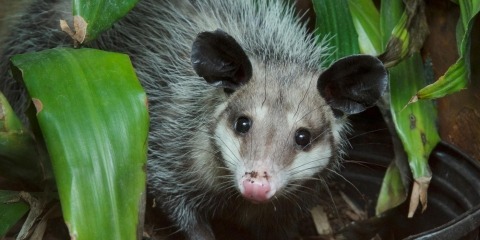
The books add 4 animals to the wilds: frogs, leeches, large tarantulas, and opossum. It acknowledges feral rats, but little else. I’d include them, easily. Several varieties of Opossum, because they are an archetypical “Ancient” mammal. The Common and Virginia Opossum, the Water Opossum, and 2 types of Mouse Opossum are all native to Costa Rica and could easily island-hop to Nublar beforehand, or be introduced for a “Night Safari” element.
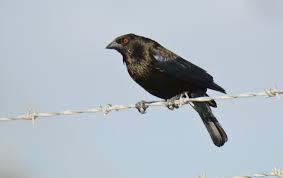

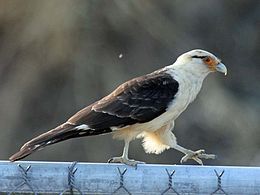
Me? There are 3 birds I’d bring focus to. The Bronzed Cowbird, the Cattle Tyrant, and Yellow-Headed Caracara. All of them follow large animals (or at least, things Capybara sized or bigger) and eat insects disturbed by the larger animals, or that try to feed on the larger animals. All are native to Costa Rica and its surroundings, so with the influx of large herbivores, they are bound to come over. Further, smaller herons and egrets would also take advantage of the larger animal movement disturbing prey.
South America also has its own dung beetles, and I bet a few of them could be called over to all the free food. Most deal with monkey poo, but I doubt they’d ignore the bounties available. InGen may bring in their own to handle the elephant-sized spore, but there will be dung beetles. Lots of them.
Other Costa Rican fauna I’d include as background elements (that could feasibly be on Isla Nublar AND fit the prehistoric aesthetic) include shrews, Central American Agouti, Northern Tamandua, Nine-Banded Armadillo, Brown-Throated Three-Toed Sloth, Hoffmann’s Two-Toed Sloth, and Central American Dwarf Squirrel.
But we also know that InGen released animals into the park that were ‘prehistoric’ to make the whole area support the dinosaurs in some way. This included a (grossly misplaced and oversized) dragonfly/griffinfly.
So, in a more realistic version, what would they do release into the wilds of Isla Nublar?

Tinamous. As I’ve said before, they can easily be in enclosures with larger animals. They’ve been in their current form for about 10 million years, and they resemble ancestral ground birds (the kind that survived the KT Boundary) extremely well.
Capybara. Docile as hell and gets along with everything, as well as attracting the tick-eating birds mentioned above, these animals can chill with the best of them. Plus the genus dates back 3.6 million years, with the subfamily going back about twice that far. They are a bit longer than the largest known Mesozoic mammal (Repenomammus (90cm, 13kg)), growing to 1.3m and 68kg.
The Feeder/Support Animals
In the novel, there are made mention of fish being stocked that the Tyrannosaurs feed on. The Arapaima is about the only fish for that environment (and easily obtainable) that could fit the bill. They also use goats as feeder animals, and in the movie, they use cattle to feed the raptors.
In my take, the carnivorous animals would primarily be fed with fish and poultry. Some smaller ones may warrant mice or rats, but fish would work much better overall. So, Chicken, Turkey, Arapaima, Fathead Minnows, Tilapia, Poecilia, and so on. Given what we currently know about Tyrannosaurs, 6 Turkey a day would be enough to keep it fed (T. rex may need about 40k calories a day to function, and one turkey can provide about 7k calories). Or 5 Arapaima (fish provide 82 calories per 100 grams, and arapaima can get up to 200kg, even assuming 100kg, that’s 8,200 calories per fish).
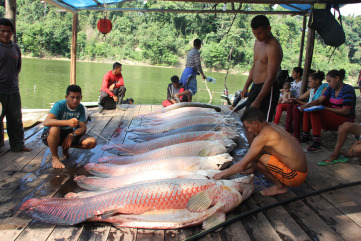
Goats have about 1 calorie per gram, so a goat weighing 40kg (not out of the ordinary as breeds range from 20 to 140kg, but it would be an overall large goat) would meet the dietary needs of a Tyrannosaur.
I’ve already mentioned the cowbirds, but they are pretty important for overall animal health. Because I’m sure there are ticks since the deer got on the island.
The Fossil Zoo
Here are “Living Fossils” and things reverse-engineered from existing animals to be more akin to their prehistoric brethren. As well as their mammalian De-Extinctions. Because some would be rather easy.
Some of the ‘wid’ animals would have an example or two in this more “proper’ zoo environment: Capybara, Agouti, Nine-Banded Armadillo, Tamandua, Sloth, Opossums.
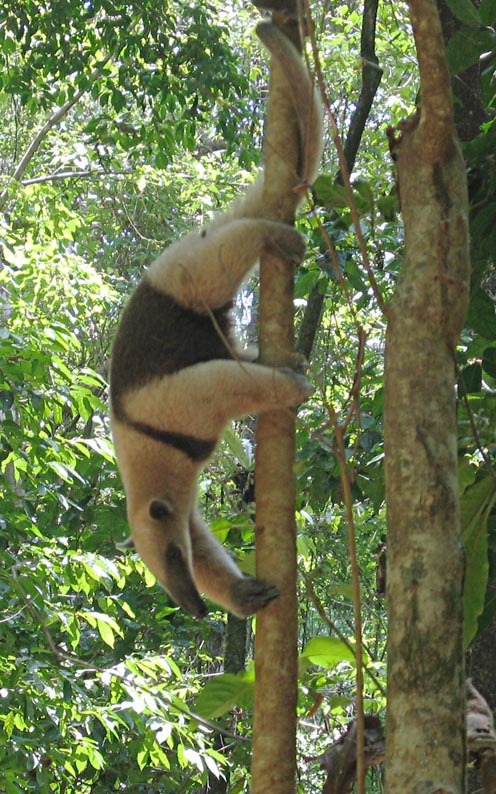
Other mammals of note in this section would be Treeshrews, an Aardvark, Greater Mouse Deer, Black and Rufous Elephant Shrews, A Tapir, Chacoan Peccary, Solenodon, A Giant Anteater, Platypus, Short-Beaked Echidna, and Long Beaked Echidna.

The Platypus and Long Beaked Echidna may be modified to be larger (2ft long, and 4ft long) to match fossil ancestors.
It would also be home to 3 de-extinct Mammals. Quagga, Thylacine, and Gigantopithecus. The first is easy, the second could get additional funding, the third... Because it’s Cool.
But with any de-extinction, there come problems. This is Jurassic Park after all.

Quagga is easy to tame but can be high strung at times. It does not react well to the smell of predatory dinosaurs.
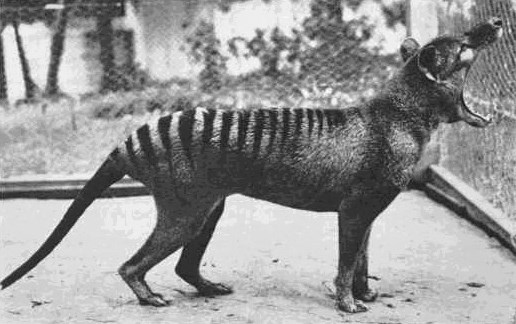
Thylacines ... have a very nasty hunting technique of BITING OFF FACES. They aren’t bloodthirsty or anything, even taking turns to feed in an orderly fashion, but their hunting technique is rather mean.

Gigantopithecus are 3m tall, 500kgs, and STILL able to climb rather well. it looks like an Orangutang trying to play Gorilla, but with only minimum sexual dimorphism in terms of size (males are still bigger) and it’s working out very well. Like orangutans, they are natural cage breakers. They also have very strong jaws and large canines. They will bite when angered, and if it wants to, it is strong enough to wreck several people in a charge.

Capybara, Mouse Deer, Tapir, Peccary, Giant Anteater, and the de-extinct trio would have outdoor enclosures, naturally.
Most of the reptiles would be in the aquatic section, but there are 4 that would be here.
Tuatara (Modified for tropical environments), the Aldabra Giant Tortoise (possibly grown to “Testudo atlas”/Megalochelys atlas sizes -- almost 7ft across and weighting 4000kg), Quinkana, and Megalania.

Why? Because Quinkana is a cool crocodilian land predator, and Komodo Dragons are basically island dwarf versions of Megalania. Quinkana is 6m long (so it’s Q. fortirostrum rather than any of the other species), and Megalania 7m long.
Once again, we have the unexpected from the de-extinct animals.
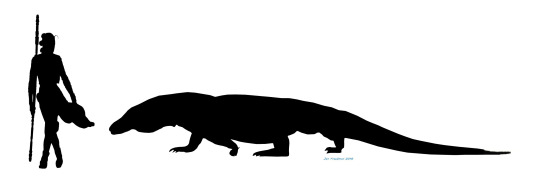
Megalania has two things that were discovered recently in its descendants. First, it is venomous. The venom lowers blood pressure in the victim. So, combined with its horrible bite, the victim will more readily bleed out. The other factor is they retain the Komodo Dragon’s ability to have virgin births. So, despite being female, they can generate MALE offspring asexually.
I think, narratively, it would be more fun for this to be the source of the breeding dinosaurs in Jurassic Park.
Despite being a crocodile, Quinkana is very active and mobile. It’s also a decent digger. So it makes a mess of the initial enclosure.

There are a few birds in the fossil house, both the subject of De-extinction efforts. The Dodo and Upland Moa. Both have some accessible DNA, and modifying birds' eggs is not too far fetched given what they've already done.
The last section of the Fossil House can be called the “Carboniferous Swamp” as it’s a re-creation (as best they can do) of that environment. Here are many amphibians, some with a proper prehistoric pedigree: Greater Siren, Midwife Toad, New Zealand Primitive Frog, Aquatic Caecilians, and Giant Chinese Salamanders. The latter of which naturally can be up to 6ft long. JP scientists ensure that they get big with modifications, and have gotten a few 2m monsters loafing around the “Fossil Zoo.” Basically, as many “Living Fossils” as they can cram together.
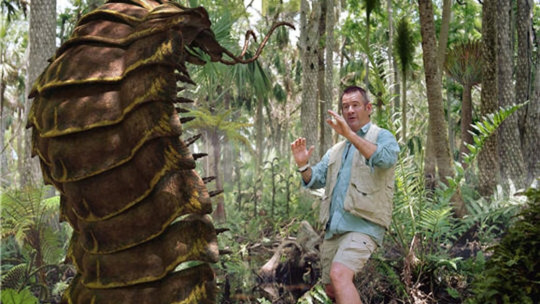
But the real prize here is the insects. There are a few ‘standard’ ancient insects, and some velvet worms on display. But the prize is the 4 ‘recreated’ insects. InGen’s versions of Pulmonoscorpius, Meganeura, Arthropleura, and Manoblatta. A 70cm scorpion, a Griffon-fly with a 65cm wingspread that was also 70cm long, a millipede 1m long, a 40cm cockroach, and a 1m Centipede.
Yes, a 1m Centipede. Narratively, we WANT things to go south, and well, there’s an episode of Lost Tapes which really has fun with giant Centipedes.

And once again, the Chaos Effect rears its head. Of course, they are breeding despite their best efforts. But it’s more than that.
The Pulmonoscorpius they have is derived from an emperor scorpion. This means it can burrow better than they expected, and while the venom of the base animal is not dangerous, the dosage in their Pulmonoscorpius makes it so. Paralyzing adults. In the weak or young, it can lead to coma and death. Also, it’s more aggressive than the base species.
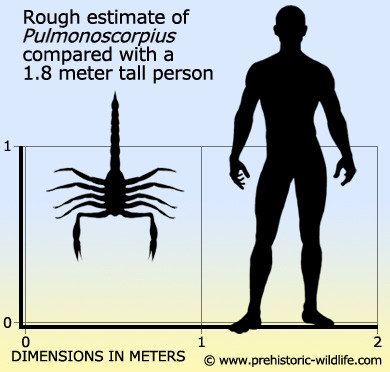
The Griffonfly is the most active among them and can use its wingbeats to breathe more effectively. It spends most of its time growing as a nymph, and a short portion of its life as a flying adult. To hold it, you need a falconer’s glove.

The Millipede Arthropleura is armored as heck. Far more than they expected. And it gnaws like a rodent.
The Centipede Arthropleura is a monster. It’s fearless and willing to attack people, with venom enough to greatly harm a person (killing the small and weak). Multiple bites can be fatal. They also act as carrion eaters.
And the roach? It’s an omnivorous scavenger. If hungry enough, they will gnaw on people who are sleeping near them.
The Aquarium (and Other Water-Ways)
There’s a lot of aquatic “Prehistoric” animals to draw on without genetic engineering. Considered “Fluff” by the park, they nevertheless flesh things out.
There are native fish in the waterways, mostly killifish. Ingen brings in (and modifies) Bichir, Paddlefish, Sturgeon, Lungfish (South American and Queensland), Gar (Tropical and Alligator Gar), Coelocanth, Bowfin, Arapaima, and Silver Arowana. Several of these are prized gamefish, so of course, Jurassic Park has a pond to fish for them.

The aquarium also includes Amphibians: Greater Siren, Midwife Toads, New Zealong Primitive Frogs, Purple Frog, Hula Painted Frog, and another Giant Salamander.
Aquatic reptiles are where things get more interesting. There’s are tanks for sea turtles (Olive Ridley’s Sea Turtle), Pig Nosed Turtles, an Alligator Snapping Turtle, and (of course) American Alligators.
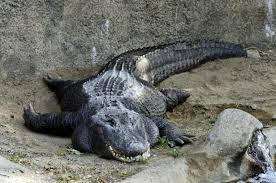
Now we get to the cloned animals. First, the aquatic crocodile Metriorhynchus. Also, Titanoboa (They call it Gigantophis, but it’s Titanboa). Nothosaurus, Ichthyosaurus, Plesiosaurus, and Mosasaurus round out the menagerie.
So, how do they go wrong?
Well, half of these animals give live birth, so the standard cloning technique didn’t work until they made an artificial womb. Titanoboa is misidentified and almost fully aquatic.
Metriorhynchus will ‘nibble’ larger prey. Bite off chunks of something swimming by, darting in and out. They may or may not kill people this way, but it will maim and ‘disarm’ them.

Nothosaurus have very dextrous hands, making the seal-reptiles natural cage breakers. They are also great climbers, so they speculate that the animals lived in rocky environments.
Ichthyosaurs look like dolphins, but they are not. More skittish than dangerous.
They thought Plesiosaurus was able to haul itself onto land, but it is not.

Mosasaurus... It is a mosasaur. A second roar of jaws to manipulate prey it captures is pretty badass enough. And it can swallow a person whole with little effort.
Among the dinosaurs, we have the Great Auk, the Original Penguin. Another recently extinct bird. Another bird in the Aquarium is the Common Loon, but by comparison, it is a minor addition.

The Great Auk is an exceedingly brave bird. It will not run readily, preferring to peck and bite when confronted. Why it’s so brave is not evident, but it is, and won’t take ‘no’ lying down.
The jewel of the dinosaurs in the aquarium is the Halszkaraptor-- the diving duck raptor. Because, really, how could I not? This one is weird enough on its own.
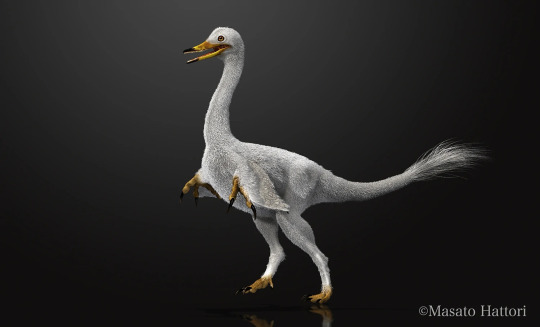
The Aviary
When I first put this together, I made an effort to keep the Pterosaurs small. I’m going to make some exceptions to that for Jurassic Park fun.
Modern Birds brought into parts of the aviary (because it has parts) are Tinamous, Seriema, California Condor, Magpie Goose, Mousebirds, Bearded Reedling, Broad-Billed Spaayoa, and Hoatzin.

Cloned birds include the Carolina Parakeet and Passenger Pigeon. These two have large open enclosures because they require a LOT of animals in their group to be comfortable. So already, there are over a hundred of each of these animals.
Avian Dinosaurs in the park include Archaeopteryx, Microraptor (which they call Tetraptertyx),, and Ambopteryx.
Archeopteryx is a glider capable of downward flaps, but no upstrokes. A generalist with the coloration and overall habits of a solitary crow.
Microraptor is a better flying and climber than Archeopteryx with its four wings and wider grip, it doesn’t seem to mind people and will use them as perches -- which can be dangerous when their claws go in the wrong place.

Ambopteryx is the largest winged Scansauropteryx. An omnivore, this bat-winged beasty is just over a foot long and vomits caustic, foul-smelling stomach contents onto attackers when it is angry. So, really, it’s a “Dragon.”
Ceredactylus was the main Pterosaur in the Aviary in the book, and I’ll keep them around too. Complete with territorial nature.
Other Pterosaurs in the Aviary include Pteranodon, Quetzalcoatlus, Sordes, Anurognathus, and Dimorphodon.
Unlike the films, this remembers that Pterosaurs use their heads for grasping prey and have no eagle talons.
Pteranodon is more gregarious, an albatross scaled up.

Quetzalcoatlus is just... well, your basic Giant Azdarhkid pterosaur. It will totally spear a person and eat them. But it spends a lot of the time on the ground, so it keeps the enclosure size small ... for a Giraffe sized animal. And yes, it will eat people if it can.
Sordes is an eater of insects and amphibians. When disturbed, they will swarm around an attacker, pecking and biting to drive them off. This can lead to some unfortunate accidents.
Anurognathus is basically a pterosaur owl and insect eater. They have the same unnerving effect as owls. Their defensive cries and glowing red eyes are terror inducing among humans, easily generating panic.
Dimorphodon gallops along the ground most of the time, flying only for short distances. Insects and small animals make up the bulk of their diet. If it’s small and fast-moving, they will try and take a bite. That includes fingers. Or whole hands.
The Park
Now we come to the dinosaurs. There are 3 main groups of them in the park: Minifauna, Fauna, and Megafauna. The Difference comes down to weight. Megafauna is reserved for animals over a ton. Fauna is for animals above 20kg (or 50lbs). Minifauna is for animals below 20kg on average.
The park comes with 21 examples of Megafauna, 10 examples of Fauna, and 10 examples of Minifauna.
In the Megafauna, many of them are prone to being ... chaotic.
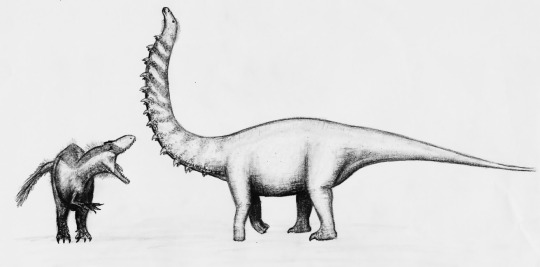
Apatosaurs are the second biggest animal in the park by weight (15 tonnes). Their necks are lined with spines they use for defense and in contests with each other. They also have a line of raised spines along their backs, which become quite wicked at the tip of their tail. Lashes with their tail, done to other herd members in dominance points, or against what annoys them, can be very dangerous. But not as dangerous as when they rear up and try to smash things with their feet or neck. It’s also a low feeder/grazer, vacuuming up food as it moves its head side to side.
Camarasaurus (C. lentus) are the heaviest animals in the park (20 tonnes), and are mid-range browsers. They are docile, but their large nasal cavity proves very enticing to Avian Flu, which it acts as a carrier for, but doesn’t really suffer from.
Spinosaurus is a big land pelican/Waddling Penguin/Crocodile thing. Big claws and jaws are nasty enough on their own with its semi-aquatic nature making it versatile, it still is goofier than it has any right to be. Which masks its danger.
Saltosaurus is a sauropod hippo with armored scutes along its back. That’s pretty darn weird enough. It’s as heavy as an elephant, and a browser as well, but not to the height of some other animals...
Tyrannosaurus hunts in packs like wolves, so they had to make a group of them as “Sisters” to prevent self-destructive behavior. So there are 4 “Sisters” that the park knows of. With all we know about T. rex, there’s not much more to ‘enhance’ it other than letting it be as smart as a modern alligator, or house cat. Yes, they are comparable. Eagle-Eyed, nose better than a bloodhound, and with powerful jaws, it is an apex predator for a reason.
Triceratops has small quills along its torso and back like a porcupine to defend itself in addition to armor plaiting. They prefer to travel in small groups and fights for dominance can occur if the group gets larger than 5 or 10 individuals.
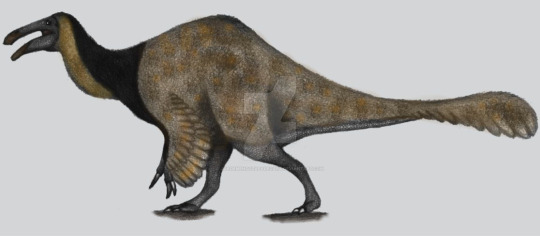
Deinocheirus is r one of those dinosaurs “This is too weird for the 80s to handle” we now know of. When riled, its arms are very dangerous weapons. And it will bite, even if only to toss away smaller attackers. Eating fish and plants, this animal has an impressive bluff display, and confidence to back it up.
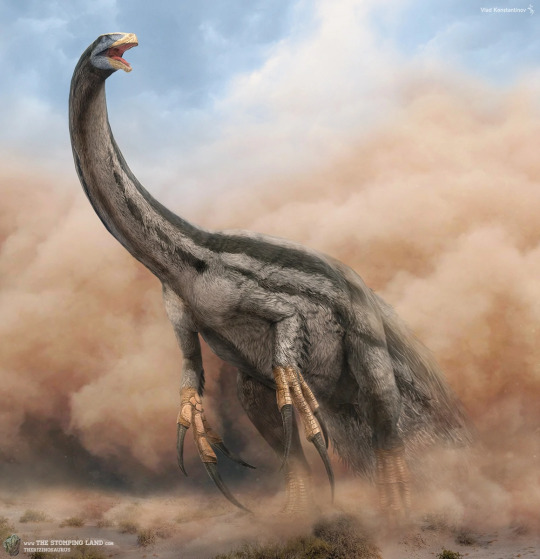
Theirizinosaurus is very weird, and worse, has the personality of a goose or swan. Very confident, will rush down what it thinks are threats, and those claws make it very dangerous.
Omeisaurus uses its clubbed tail to establish a pecking order (or “smashing order”) in the herd.
Euhelopus is one of the few true browsing sauropods, really resembling a Giraffe in posture or a small Brachiosaurus/Giraffatita. Like a Giraffe, it can kick with a LOT of force. Enough to decapitate a man from brute force alone. It’s the smallest of the long-neck Brachiosaurus, which is why it was targeted for cloning.
Ankylosaurus is a goat. It eats damn near anything. Primarily eating leaves, it also adores fruit, and will go after large insects when it can. Or swarms of them it just licks up after breaking open a nest. They are proficient diggers as well, they like to sleep in burrows they build. It’s also very well camouflaged, so you can trip over it and it will likely take a swipe at you for your mistake.

Edmontosaurus may be considered a ‘simple’ dinosaur from the bones, but that doesn’t tell the whole story, not by a longshot. See that picture? That’s an Edmontosaur!
Stegosaurus is an extremely stupid ninja. It moves quietly for its size, can wiggle and turn its plates red when angry as a distraction, and fold its whole body into a U shape to better strike enemies with its thagomizer. And it is not afraid of groin shots.
Styracosaurus is all about intimidation. When confronted, it will mock charge, holler, stamp, and make a fuss. But if you stand up to it, it will back off, or even run away.
Amargasaurus uses its neck spines defensively while grazing. When threatened, they roll their heads under their chests, sticking out their spikes, and charge. They do this with minimal provocation. They also lash their tails around wickedly.
Parasaurolophus is LOUD. Constant maintenance is needed on the paddock as they can rattle apart their paddock locks if they are not checked regularly. It also gets the attention of certain predators regularly. Insulation has so far proved ineffective.

Gigantoraptor is pretty damn weird all on its own. An omnivorous oviraptorosaur over 12ft tall at the hip, feathered and fearsome. It uses its feathery arms (as well as a displaying throat pouch to communicate with members of its species.
Allosaurus, the lion of the Jurassic. They behave similarly to crocodiles, but more actively. Which means they hunt semi-cooperatively. Because of their primarily slashing jaw setup and strong necks, they prefer to bleed large items to death rather than quickly kill them. They can still swallow a man whole (as long as they aren’t too big).
Plateosaurus is a large, primitive planteater. It walks on its hind legs, despite its size and descendants. When threatened, it rears up and tries to claw attackers who get to close like an irate Ant Eater. And those claws are very mean. They rake trees with their claws as a demonstration of power in the herd.
Borealpelta digs ruts for themselves to sleep in at night. This means only their armor bits show up. They usually use the same one when they can, but it still damages enclosures.

Carnotaurus is a Cheetahs. Extremely long-legged runners at high speed, and at long distance. They can also swallow a man whole by stretching their jaws out. Also, its tiny arms are used for flappy dance displays.
Now we come to the Fauna, which are small enough to get inside buildings and still be a visible threat to humans on occasion.
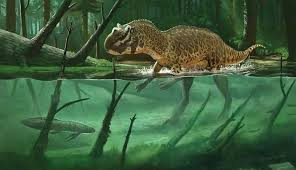
Ceratosaurus is basically a bipedal crocodile, scutes and all. The nasal horn is flat and largely for display. They prefer swampy environments and eating aquatic animals. The thick hides of these animals make darting almost impossible, and mildly resistant to small arms fire.
Pachycephalosaurus have dynamic skulls, the younger ones being spikier than the adults. And they will butt EVERYTHING that annoys them even slightly. Worse still, they are omnivores. They decrease the amount of meat in their diet as they age, but they won’t turn it down.
Dilophosaurus has the frill and venom of the novel/movies, but the frill is made of feathers rather than skin and is lost in adults, which can be up to 3m/10ft tall.

“Velociraptor”, or really, Dakotaraptor, is as smart as a crow, which means minor tool use. Juveniles can fly short distances to escape an attack. They are less like wolves and more like lions in how they hunt, climbing in trees to assist in their ambushes. Think of them as ground-eagle-panthers with crow intelligence.
Protoceratops make burrows to live in. They sleep for short periods throughout the day and night, at seemingly random intervals.
Struthiomimus’ fully developed wings are colorful, large, and help it maneuver at speeds up to 50mph (80kph). They also help it intimidate others -- their claws also packing a bit of a punch. Primarily herbivorous, they are also very vocal animals. Almost obnoxiously so.
Dryosaurus is the dinosaur equivalent of a deer or large gazelle, living in small groups in forested areas. Because of this, and an extremely skittish nature, they are hard to spot in their enclosures. Sure, they are ON the tour, but the runaway when the cars come by. It makes care for them difficult as well.
“Troodon” is really Stenonychosaurus. Omnivorous, the focus on rodents and other small animals. They also feed on more fruit, seeds, nuts, and other high energy plants more regularly than InGen thought. They are the best cage breakers in the park, being the smartest animals there (yes, smarter than the raptors). They are also guide-animals. They will guide larger predators, like tyrannosaurs to food sources they can’t access, but that the other animal can. Similar to Crows and Wolves.

“Oviraptor”, really Anzu, is a large oviraptorid. Herbivorous with occasional meanderings into carnivory, it’s main gimmick is its voice. It’s a Lyrebird. It can vocally mimic anything its herd before and incorporate it into display songs. It can also use this to manipulate other dinosaurs, be it attract small animals to eat, bring ‘help’ for itself, or scare away potential threats. So, imagine a scene. A group of humans is hunting for other survivors, they hear someone crying “Help! Help!” and occasionally screaming. They rush to aid and find this tall animal here. Their guard lowered in confusion as another predator sneaks up behind them and takes them down.
“Parkosaurus” is actually Oryctodromeus. A burrower like Protoceratops, they are more communal in their nesting. It’s rather unsettling to see animals as big as a medium-sized dog pop-up out of the ground like prairie dogs.
Microfaunae are Coyote or smaller animals that can still be dangerous, but not so often or as directly.
Coelophysis is the “Emu” of the park. They are inquisitive, but also not very bright. They are also opportunistic. Which can be hilarious, but also dangerous, because you are made of meat. And they see no qualms with biting someone and running away again and again. In groups.
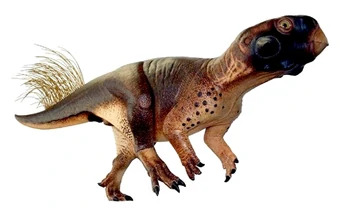
Psittacosaurus rattles its tail feathers as a means of simple communication. They also bite with a lot of force when agitated, enough to take off a hand.
Dromaeosaurus is a small raptor (or rather, typical, medium-sized one), but one more heavily built to take down prey larger than itself. This one will hook onto a person and bite away, ripping out chunks. Given they are about the size of a turkey, several of them can do that to a person.
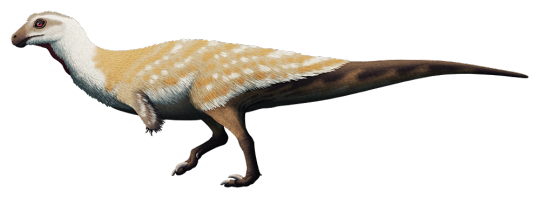
Vespersaurus is an opportunistic omnivorous desert dweller that runs along sand primarily, using its single grounded toe to get better traction and movement. Its kick has TWO large raptor-like claws on it, making it extra nasty.

Limusaurus is another Noasaurid, a strange group of dinosaurs related to Ceratosaurus. This one changes its diet as it ages. As hatchlings and juveniles are omnivorous, eating plants, insects, and small animals. As they become adults, they switch to an entirely herbivorous lifestyle. This confused the hell out of InGen first time through.
Nanosaurus (a.k.a. Othnelia/Othneliasaurus) is a tiny ornithopod that fills in the same role as a Thompson’s Gazelle. Small, grazing, and skittish. They like being in large herds for protection.
Panphagia is an omnivorous ancient sauropod relative and the oldest species of dinosaur in Jurassic Park. A consummate opportunist, its hands make it a pretty decent cage breaker. And it really will eat anything, almost as much as the Ankylosaurs or goats, but more carnivorous.
Procompsognathus is a chicken-sized carnivore that eats small animals as well as scavenges for food. It is also venomous, operating in groups to take down injured animals larger than itself.

Compsognathus, by contrast, is a housecat in terms of personality. An expert killer of small things, but can easily cozy up to humans. Considered “Petting Zoo” material, if not for their teeth and claws.

Shuvuuia is one of those animals that scientists even today don’t really know how it works and is also one of the smallest nonavian dinosaurs. It uses its claws to break open rotting wood and picks off insects very quickly. Because it eats a lot of poisonous insects and acid-filled ants. And it converts that into pure stink. Yeah, it’s an anteater-skunk dinosaur.
Final Thoughts
I could probably have shaved things down to 10-15 of the movies/books, but I wanted to fill things out not just for variety, but for a proper park.
I’ll probably revisit this for a later post...
8 notes
·
View notes
Photo

Yellow-banded Millipede - Anadenobolus monilicornis
10 notes
·
View notes
Photo

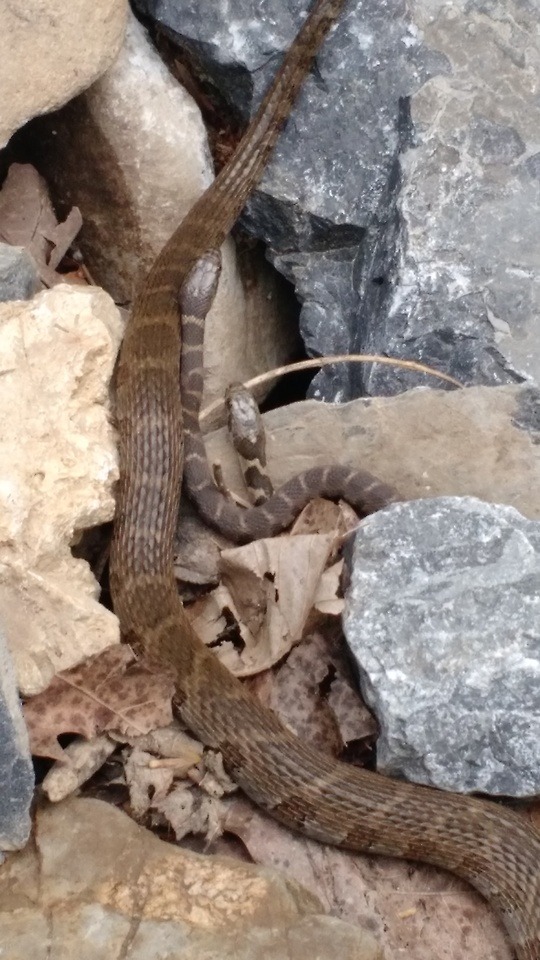


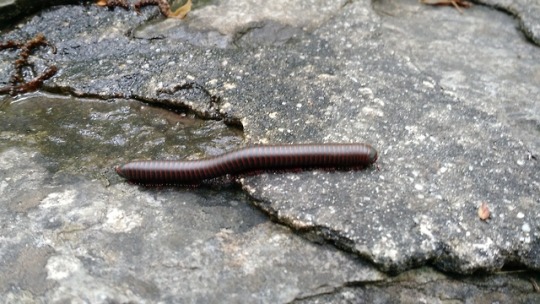
The trip quickly became "spot the snake"! The ones with a yellow band are harmless garter snakes. The brown ones could possibly be cottonmouth/water moccasins, which are highly venomous. Also saw plenty of millipedes and butterflies.
#skull and baseball#natural bridge#virginia#nature#snakes#garter snake#water moccasin#cottonmouth#millipede#bugs#butterflies
53 notes
·
View notes
Text
An Island in the Pacific
From the desk of Shatner Wildes:
Somewhere in the Pacific there exists an island unlike any place on Earth. From a distance, it appears to be one in a thousand deserted islands: crystal blue waters, sandy beach, lush viridian jungle occupying the center. But upon entering the shallows one witnesses a most peculiar sight: thousands of pairs of silver eyes, staring back at them. In reality, these eyes are a curious species of fish, no more than six inches long and silver in color. The illusion is the result of a black spot over a larger blue spot at the center of their bodies. They are edible, tasting like herring. The only other large organism in these shallows, if one can see it, is a variety of spider conch, pale white save for its’ ebony digitations curving out like eyelashes.
Arriving at the beach, one notices the sand is white, blindingly so, and fine as powdered sugar. It makes a long, uninterrupted band around the island, save where on one side it curves into the ocean in a series of thin, near identical sandbars. Remarkably, the sand is totally devoid of shells, footprints, or any of the other typical signs of animal activity. Even noise is lacking, save for the wind and surf. Yet somehow, the odd feeling of being followed permeates.
Venturing into the jungle, the humidity becomes almost palpable. And if one listens closely, a faint squeaking can be heard. Compared to the shore, the jungle is a cacophony of greens, reds and purples. Vines trellis their way up stately palms, the tallest of which eclipse at eight meters. At the feet of these nest a variety of bushes, ferns, and flowering plants, jockeying for sunlight.
But for all their variety in form, something binds them: leaves, regardless of color, have a dark spot at their center, and flowers, be they small as a penny or large as a human head, have white petals stained with read veins. They smell like rotting meat. Pale mushrooms with a darkened center sprout from the dirt. By this point, the sensation of being watched starts to become unbearable. And then something five inches long comes fluttering through the air.
A butterfly, gracefully landing on a flower, which it immediately begins probing with its’ proboscis.
The wings bear spots resembling piercing yellow eyes, closely resembling the owl butterfly (Caligo eurilochus) in form. And herein lies the great irony. For if one were to look at it closely, they would see it is completely and totally lacking in eyes. All the butterflies on this island are, and so navigate using high pitched squeaks, just barely audible to the human ear. They are perhaps the only species of butterfly on Earth known to do this. If one has the courage to venture deeper into this jungle, they would see more individuals of the species, the only butterfly species on the island, flapping through the understory, sucking nectar or resting under the boughs of trees. And if they are lucky, they can hear the sound of twigs snapping underfoot as something large draws near. If the weary traveler has not been driven to flee in paranoia, they will be greeted by perhaps the most extraordinary creature on Earth.
The beast (nicknamed ‘the Triffid’ by scientists) is about seven meters long and shaped like a millipede. Its long body is fuzzy with moss and ferns, and in place of legs, it has several curved ‘roots’ that move up and down in rhythmic motion. Branches jut from its’ back, granting an air of primal majesty. Whether these branches and ferns are part of the organism or simply protective covering is not known. Despite being so large and moving at no more than 3 KPH, its’ incredible camouflage means it tends to find visitors before they find it.
It, too, has eyes of a sort. These come in the form of its’ branched ‘head’, whose vines excrete a sort of nectar that causes the butterflies to flock to it. This gives the illusion of a many eyed monster straight out of the depths of Greek mythology. Raised about two meters off the ground, it is quite the imposing sight.
Returning to the butterflies, it is suspected the Triffid is the only reason they survive at all. If one were to walk along the creature’s length, they would see several fat, persimmon caterpillars of varying sizes, munching away on the ferns that sprout from its’ back. Since these caterpillars are found nowhere else on the island, it has been hypothesized their diet consists exclusively on these ferns. In a similar vein, the Triffid has several branches protruding from it which have no leaves at all, but end in ‘bowls’ ideal for collecting rainwater. In this way, the Triffid is the sole source of freshwater on the island, a very good thing for castaways.
And castaways there have been, for if one were to travel down the Triffid’s length, they would see, hung on protruding braches, hats. Mostly straw, but also panamas, fedoras, a sombrero or two, stetons, sixteen non gaos, five ghats, a WWII army helmet, and wreaths made of both flowers and twigs. Nobody knows how such a diverse array of castaways arrived at this island, or why they left no traces of their arrival but a token offering the only organism of its’ kind in the world.
This does, however, beg the great question: why?
Why have both the flora and fauna of this island evolved to mimic eyes?
The most widely accepted theory is that at some point, humans settled the island and began exploiting its’ resources. For whatever reason, they avoided creatures that resembled eyes, shifting natural selection in such a direction until the presence of so many eyes became unbearable and they left. However, there are two problems with this theory. Firstly, outside of the several hats placed on the triffid, no evidence of long-term human habitation on the island exists. Furthermore, the process of natural selection, and by extension, evolution, typically occurs of a scale of tens of thousands of years, meaning it is not feasible humans could have altered the evolutionary trajectory of every known organism on the island in the form of sporadic visits. The most dam*ing evidence comes in the form of the Triffid, which carbon dating shows to be over 5 million years old, predating the first human civilizations by millennia. In spite of these holes, the theory retains popularity by virtue of parsimony, as alternatives are viewed as just as, if not more, outrageous.
Consider the ‘predator’ theory. At some point in the distant past, so the theory goes, the island was significantly larger, hosting a species of predator which was characterized by particularly unique eyes. Over time, natural selection began to favor organisms that mimicked the creature, resulting in the current state of the island’s flora and fauna. Ironically, it is a selection the evolving organisms themselves would have been completely unaware of, lacking eyes. As for what happened to these predatory creatures, as the island eroded back into the ocean, there were simply not enough resources left to support them and they went extinct. This, of course, begs the question of why no fossils or remains of these creatures have been discovered. Supporters of the theory assert the creatures’ remains, given their low energy environment, would have not been buried sufficiently fast enough for fossilization to occur. Furthermore, it is entirely possible the creatures lacked a solid skeleton optimal for fossilization. Sharks, for instance, are large and incredibly common oceanic predators, but most shark fossils only consist of a few stray teeth and the occasional jaw. Adding to this, due to the existence of the Triffid, some surmise that at one point the island was inhabited by several other organisms biologically unlike anything else on Earth. The remains of these hypothetical predators may have already been found, but were indistinguishable from, say, rocks or tree branches. In this way, it could be argued the entire island is a gravesite, every organism serving as a marker to a species that died off long, long ago.
The last of the major theories is the ‘Rorschach’ theory. This one asserts the organisms were not selected to resemble eyes at all, but a circle pattern which simply resembles eyes to the pedestrian, as humans by nature are preconditioned to look for familiar patterns in alien objects. The theory goes on to further explain the eye patterns are the result of population bottlenecks that favored the patterns by chance as opposed to being a beneficial adaptation. This does not, however, offer sufficient explanation as to why every single organism, by coincidence, evolved these patterns despite the odds of such a thing occurring in nature being highly unlikely unless selective pressures were present.
Only time will tell if science can unravel the mysteries of this island in the Pacific.
1 note
·
View note
Text
Getting a yellow banded millipede today and absolutely wired about it
0 notes